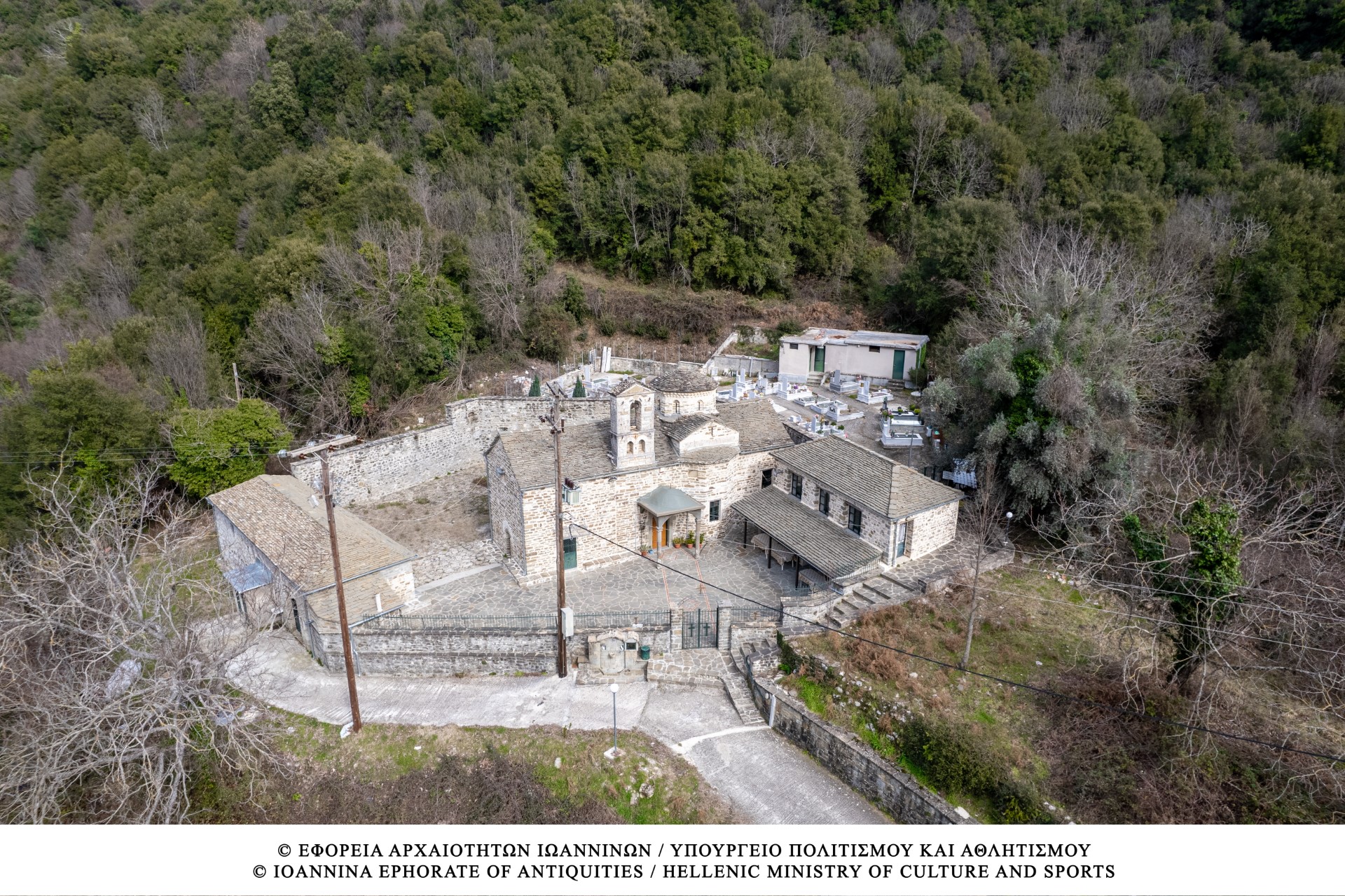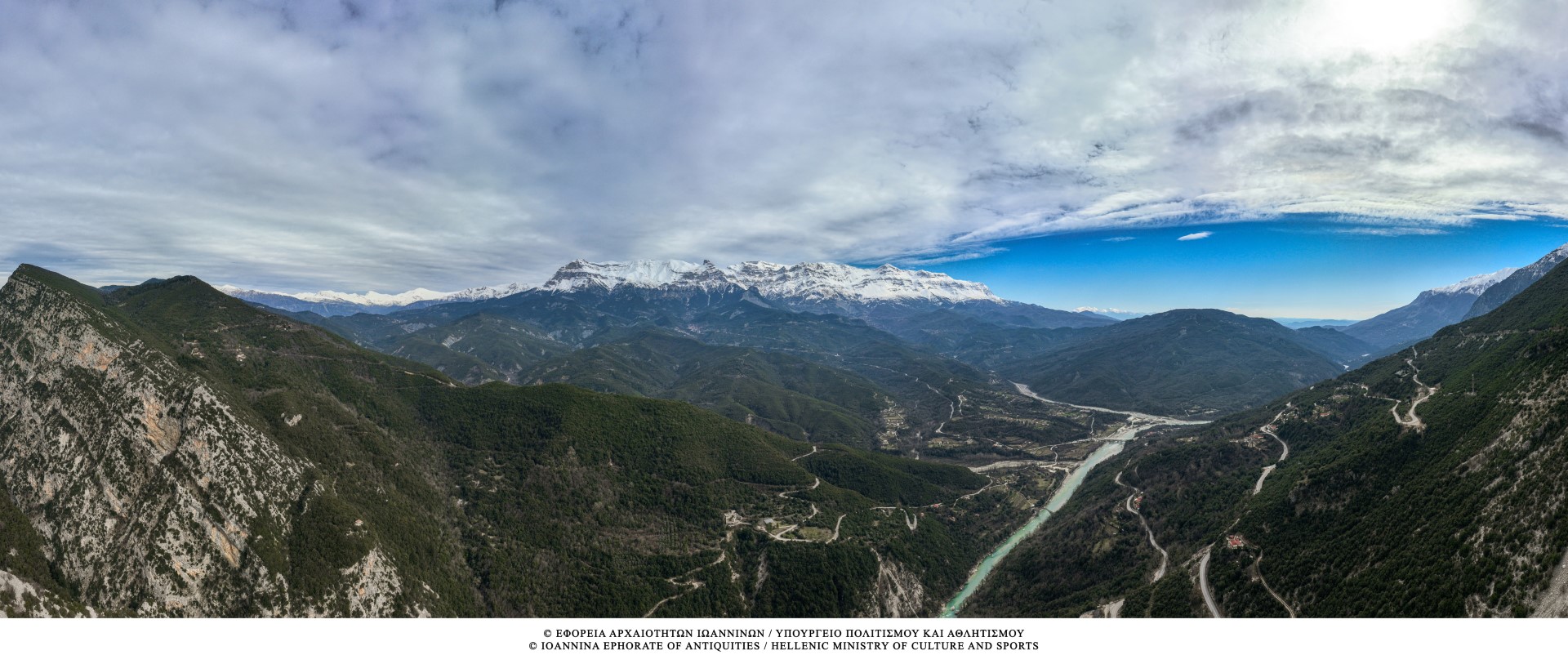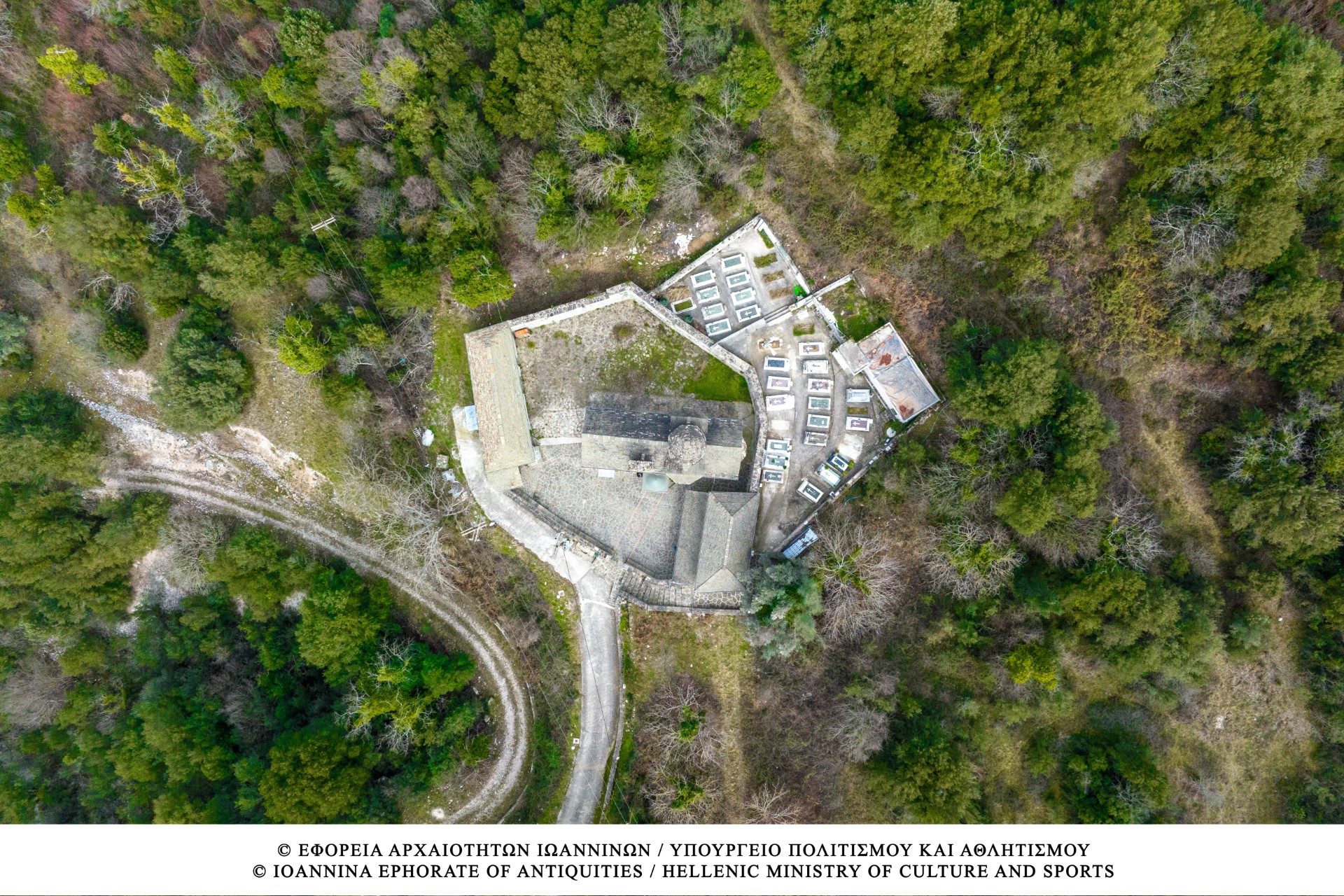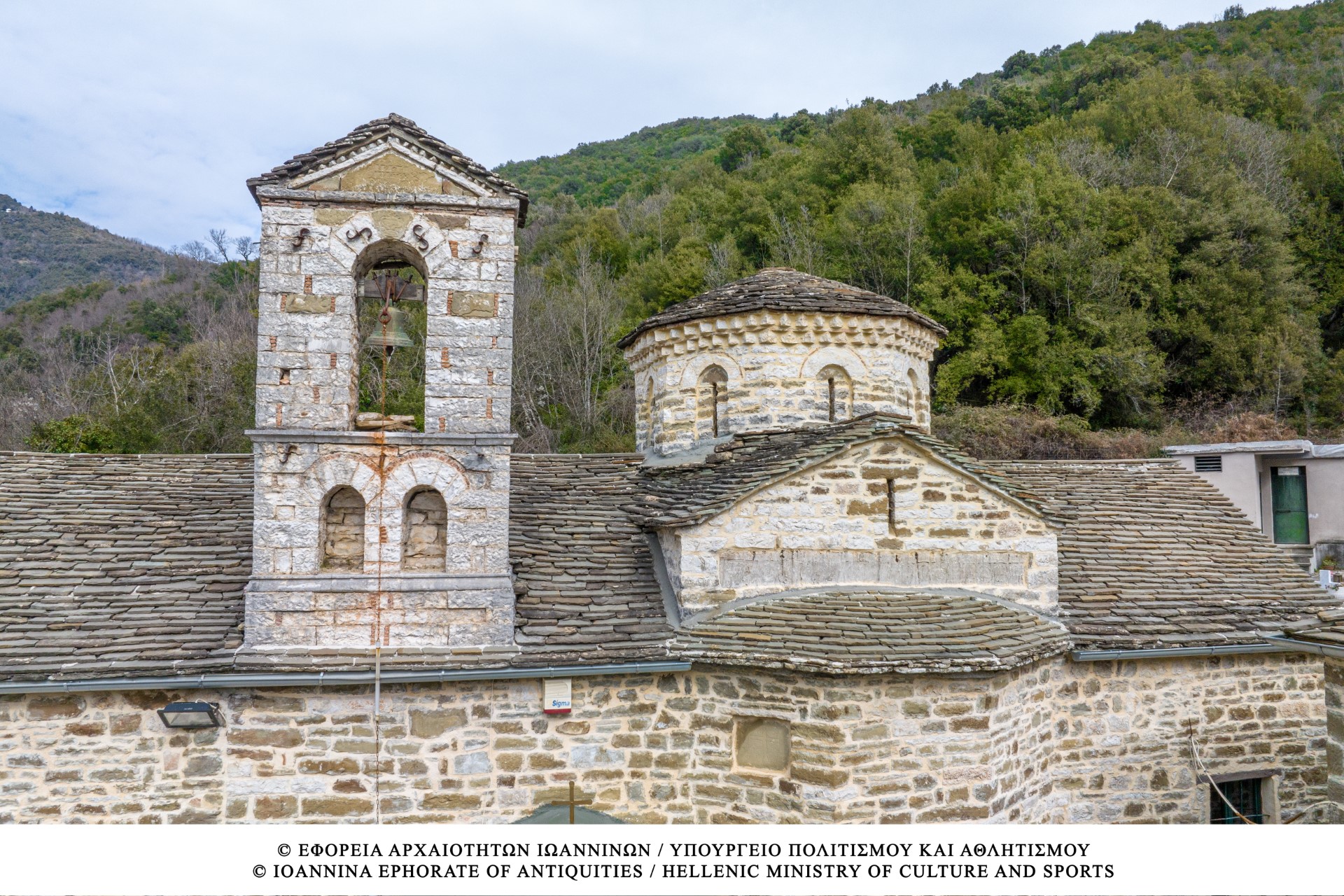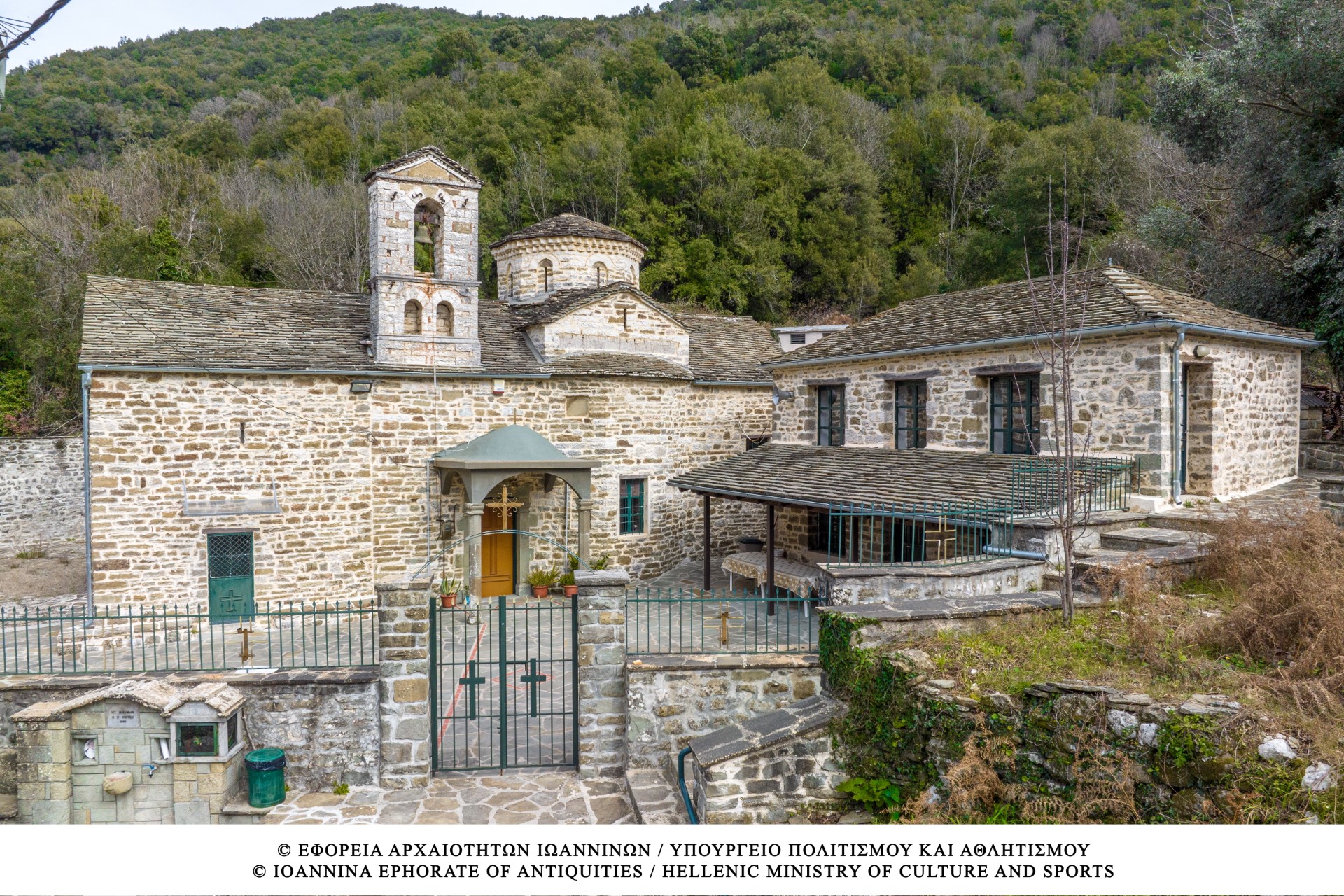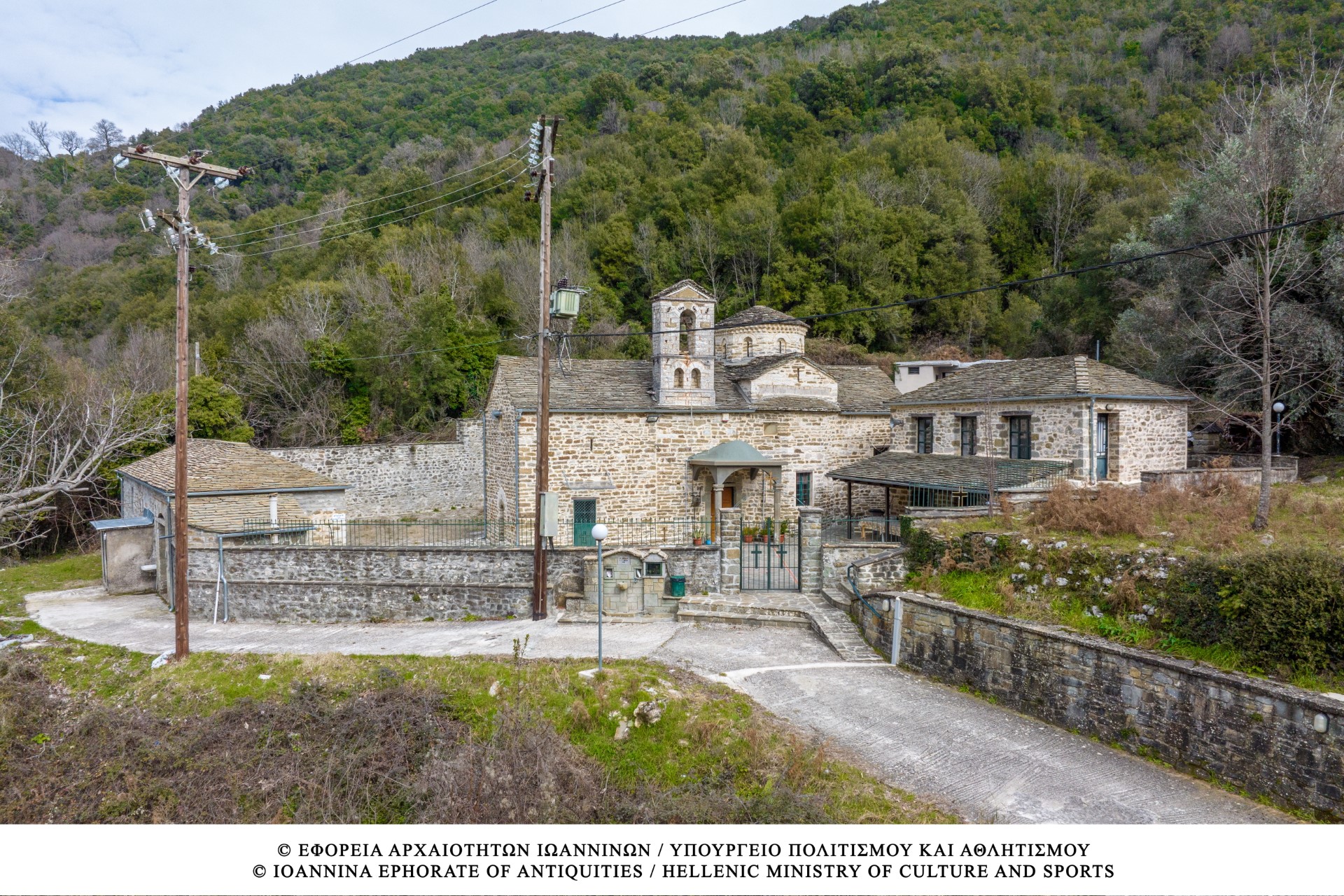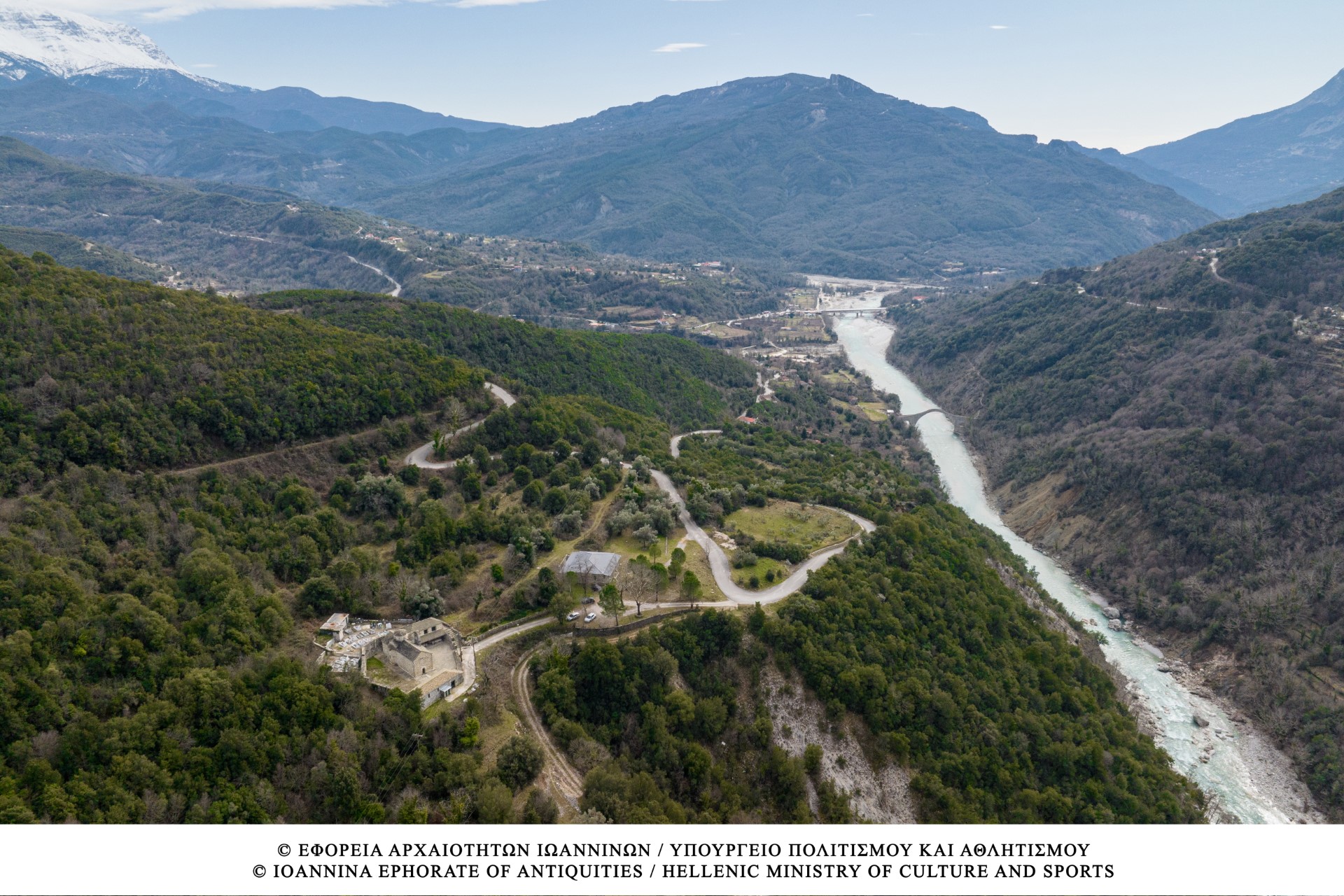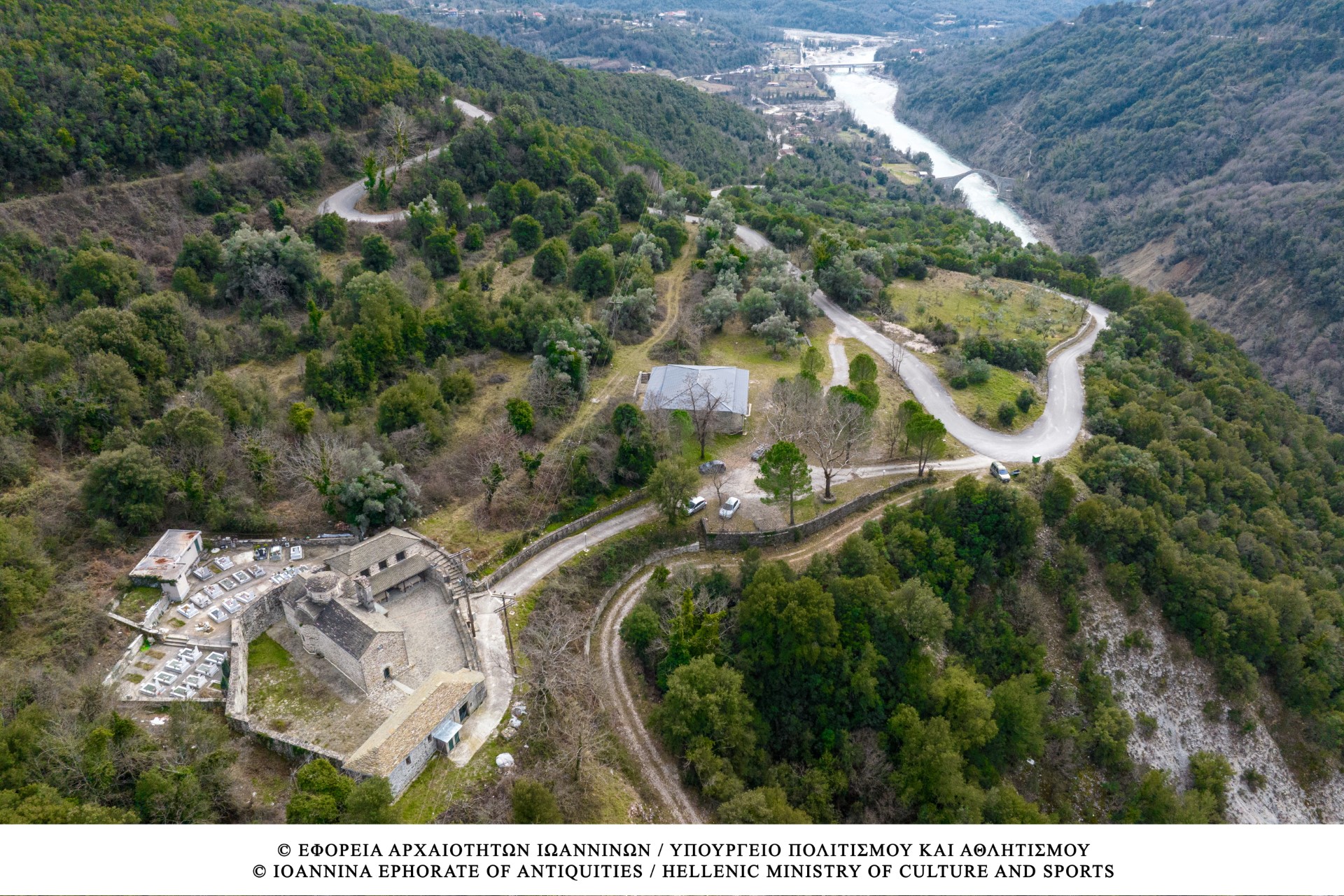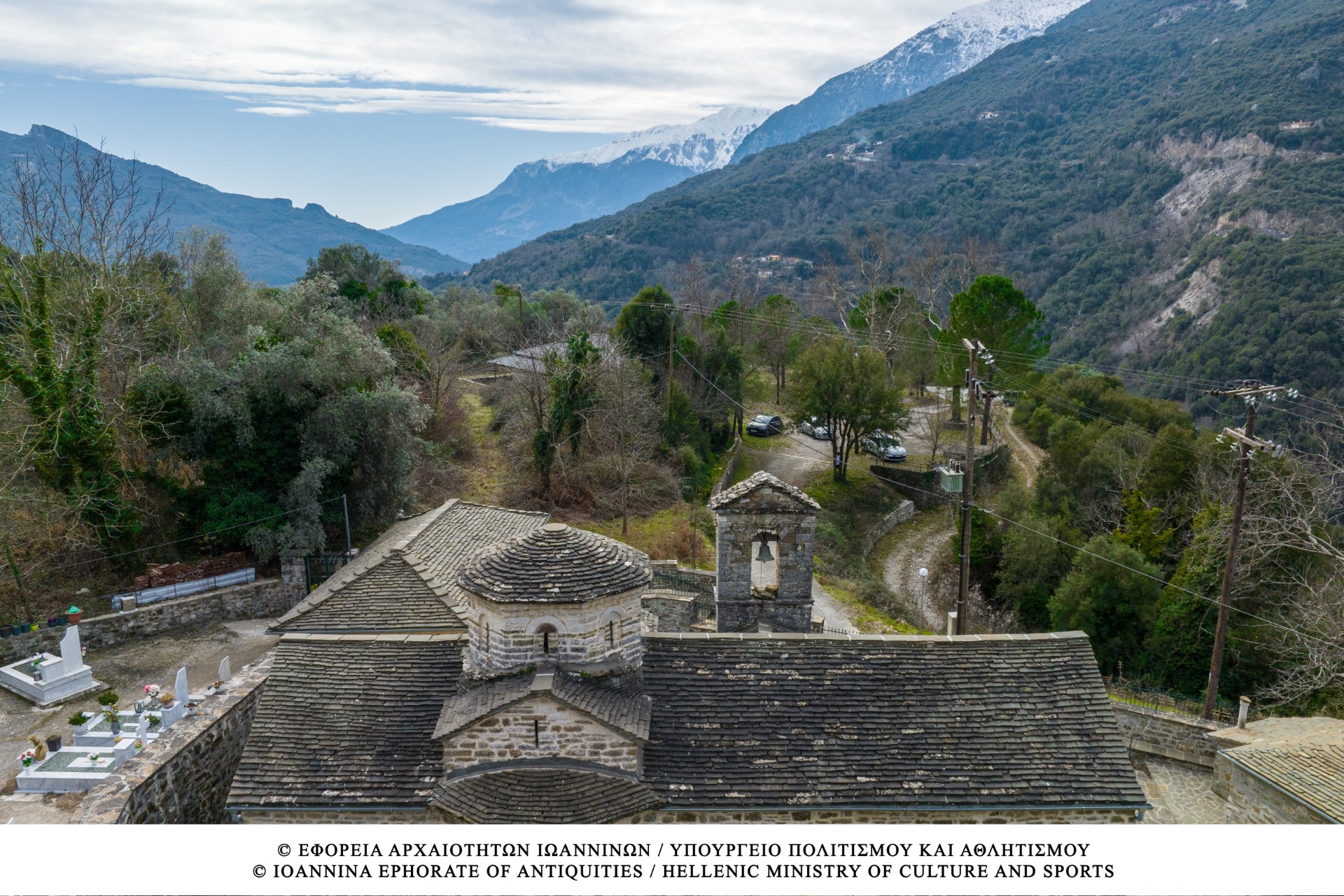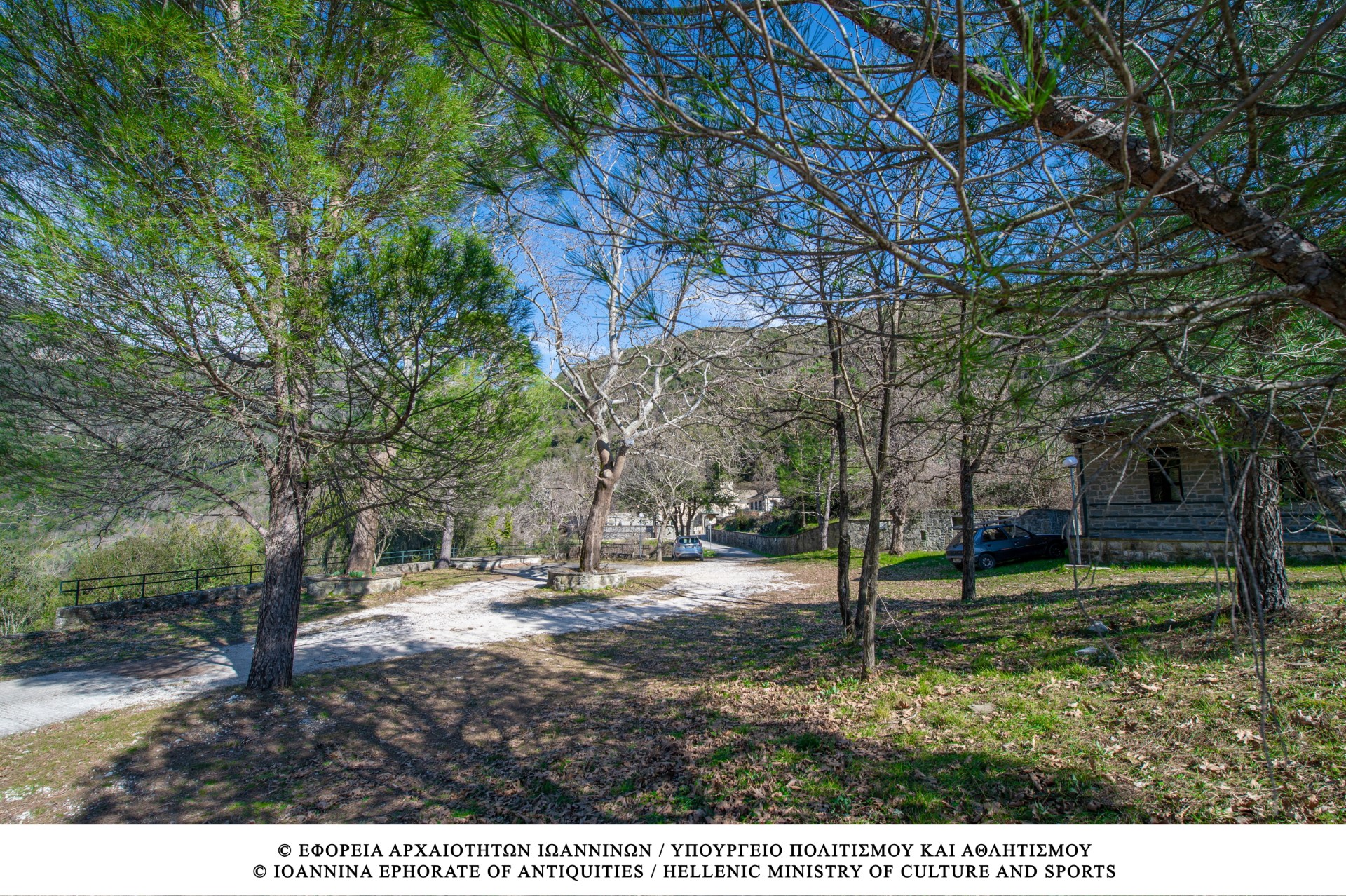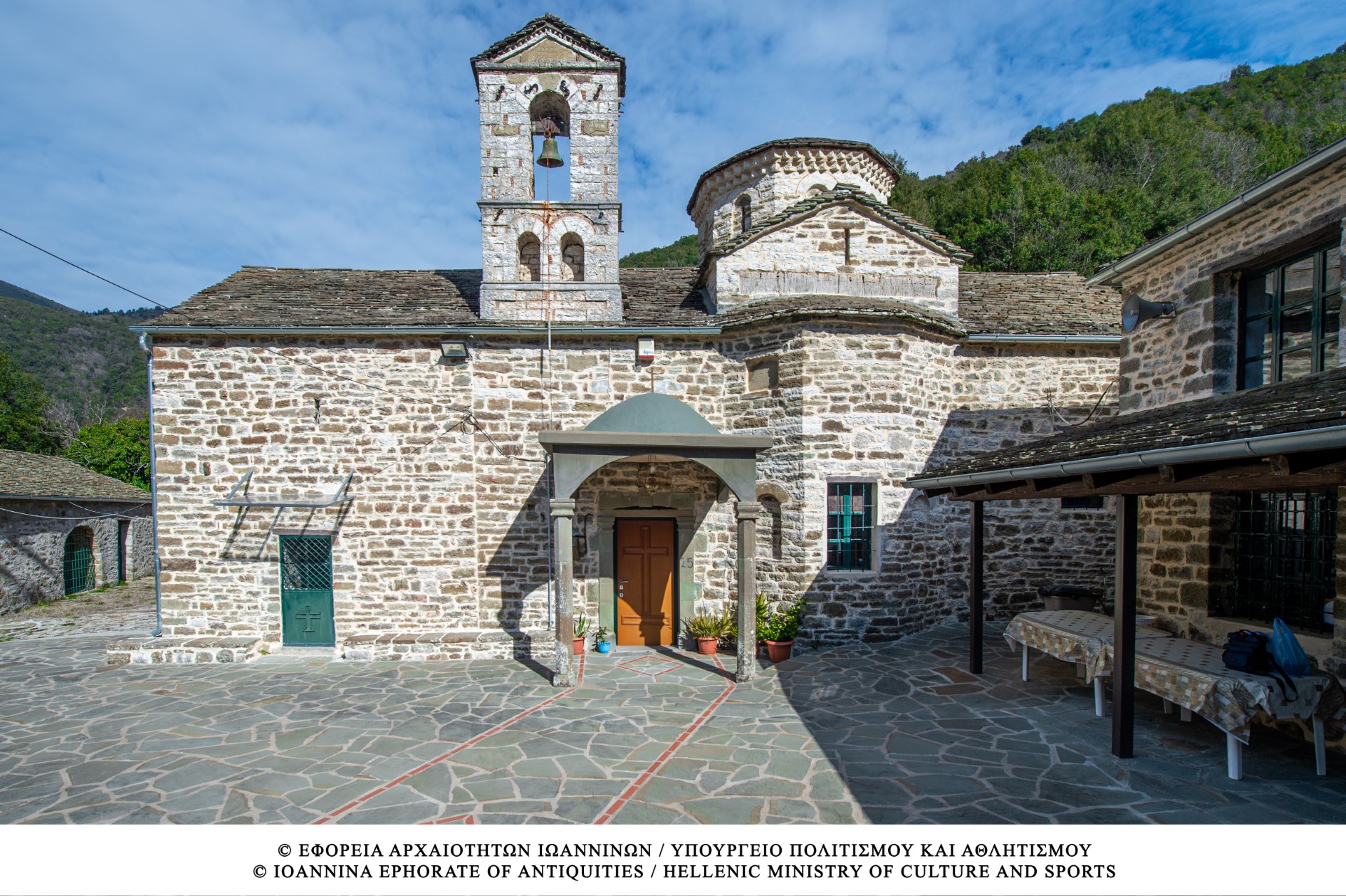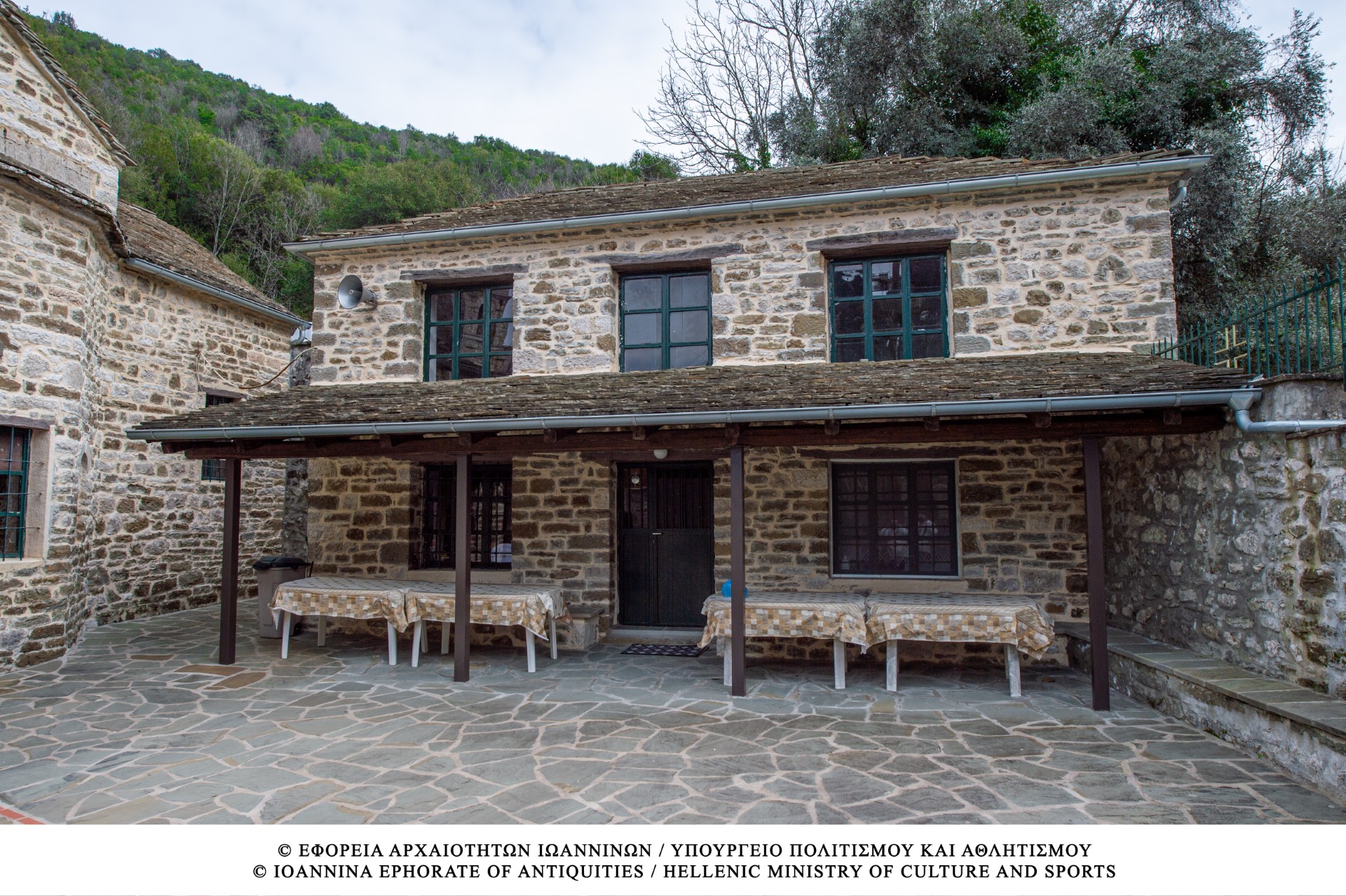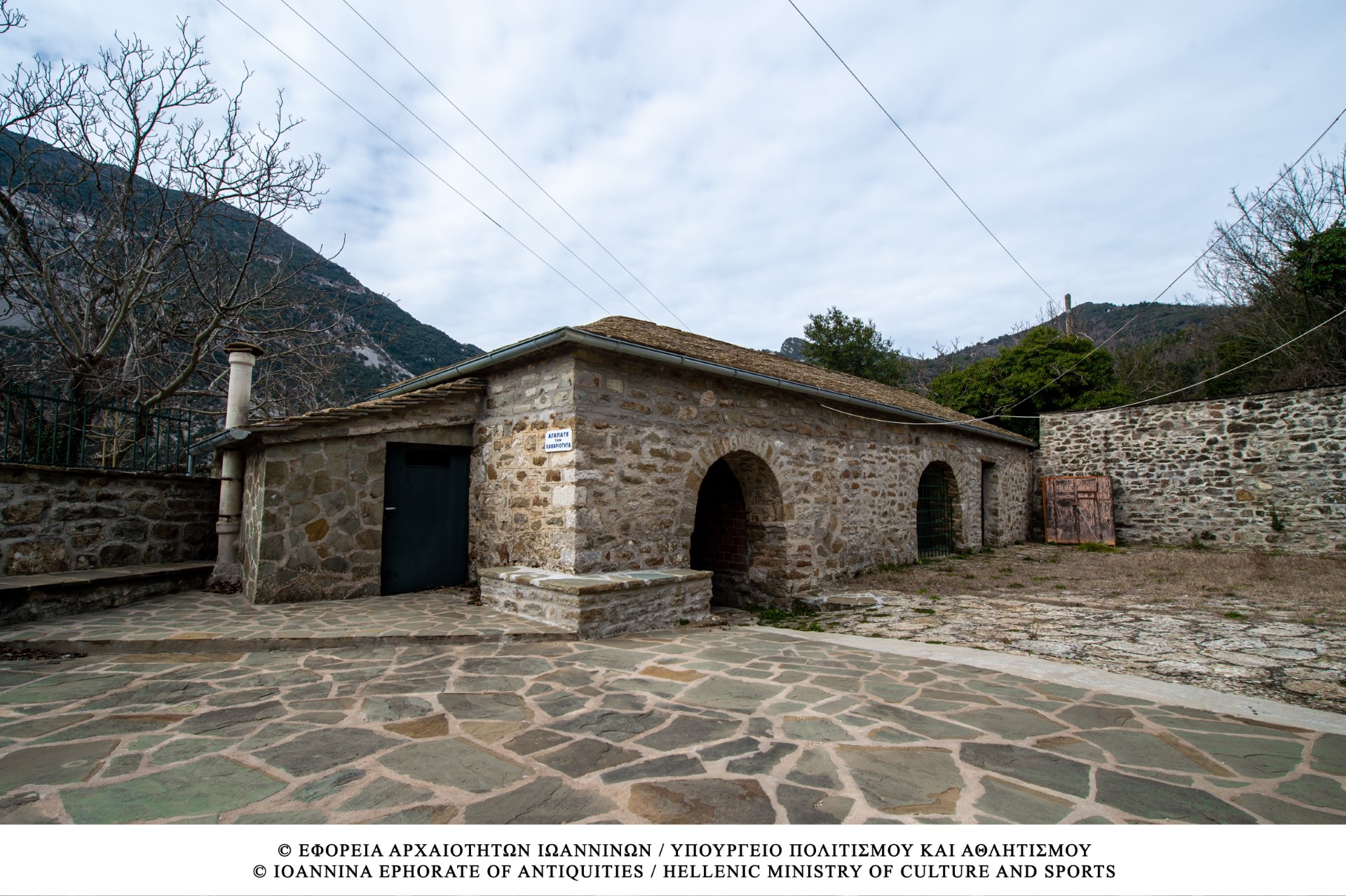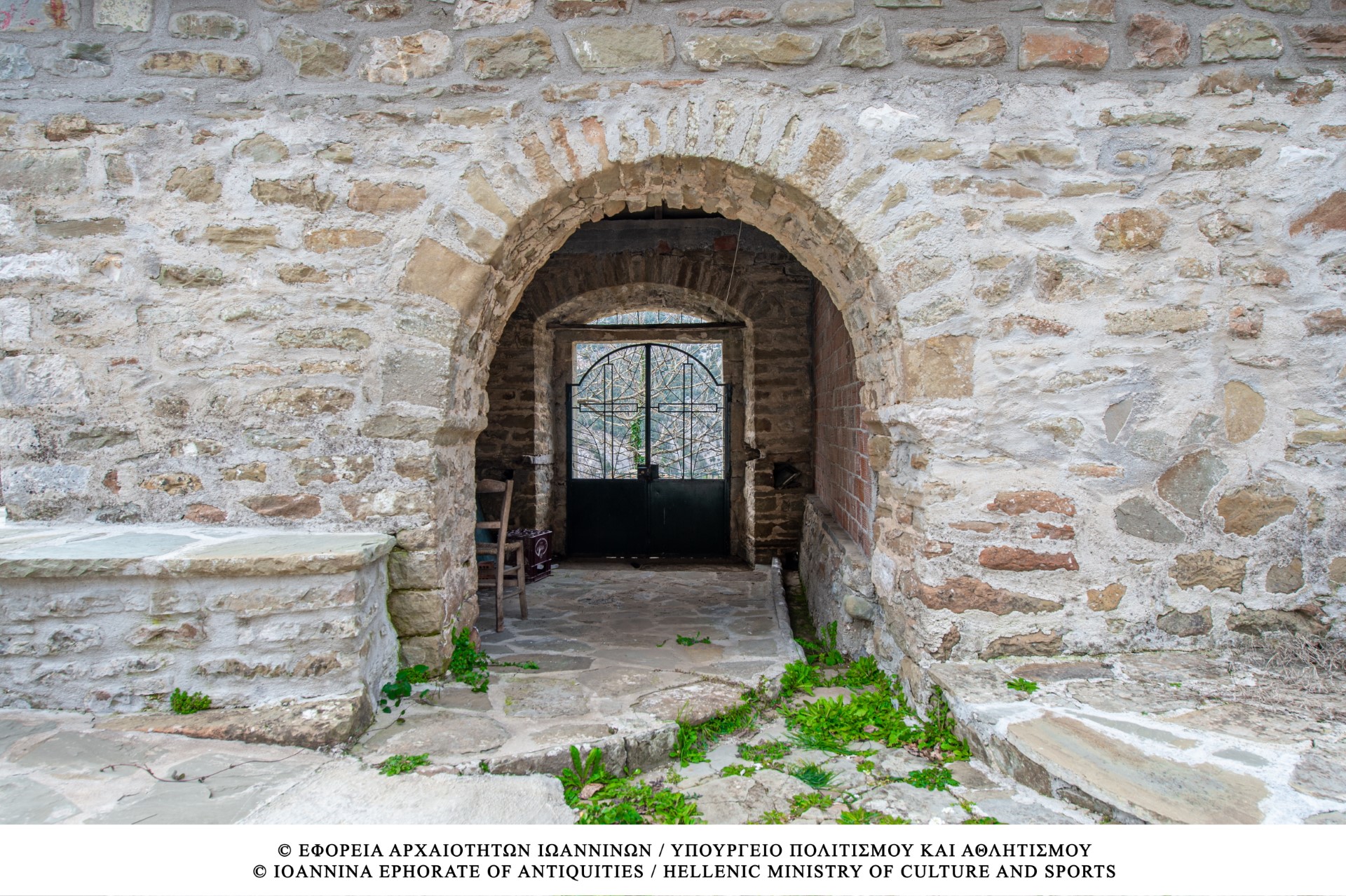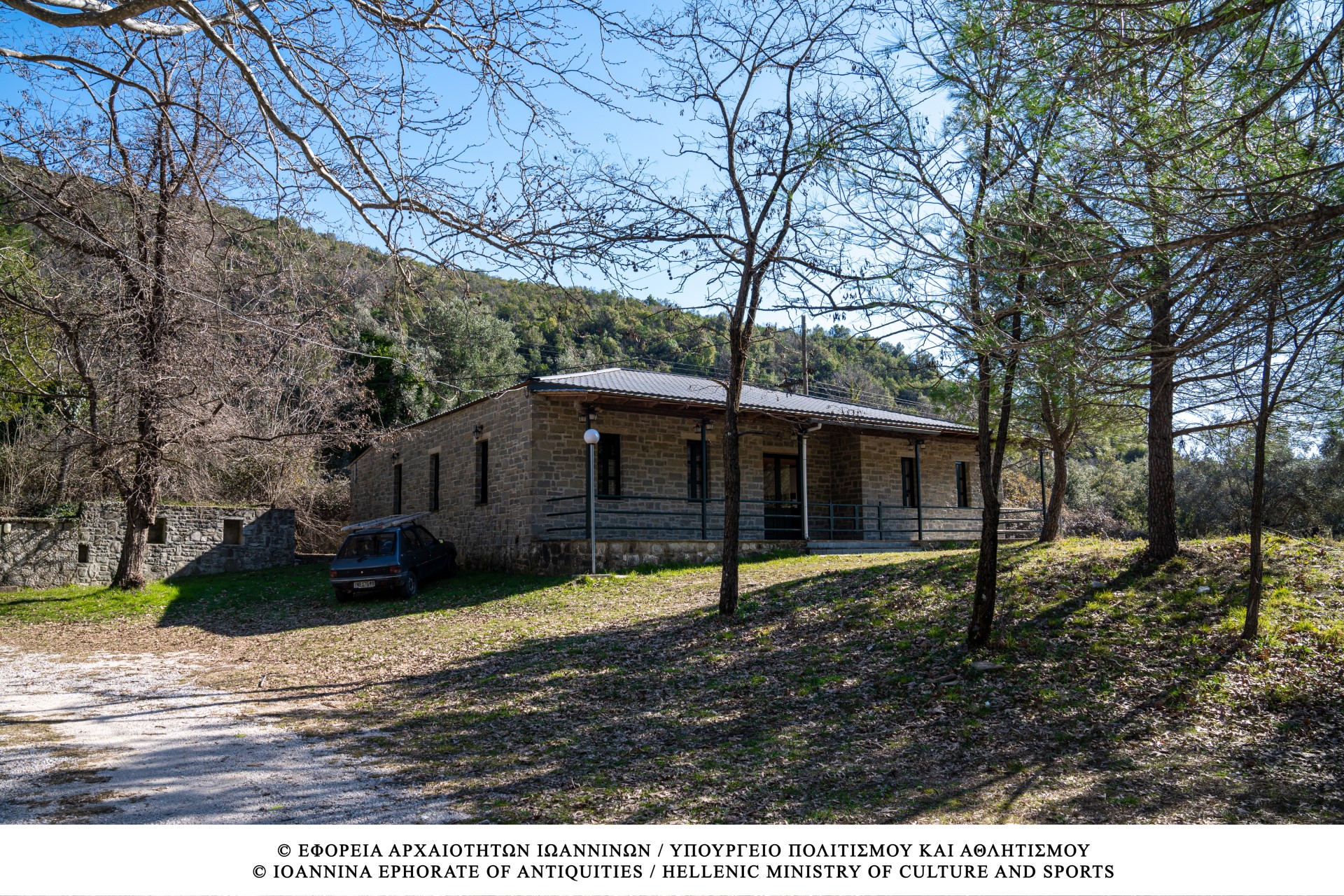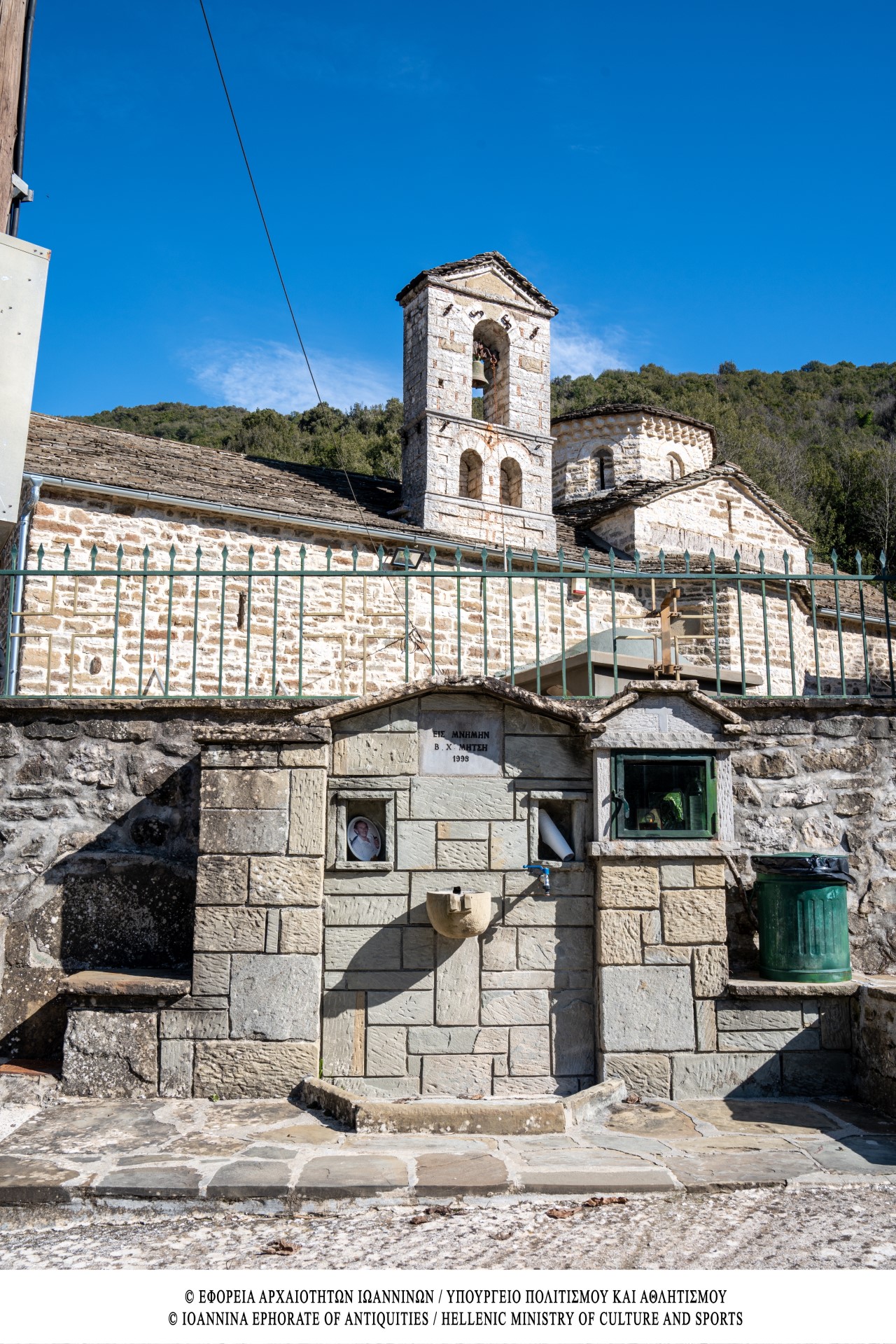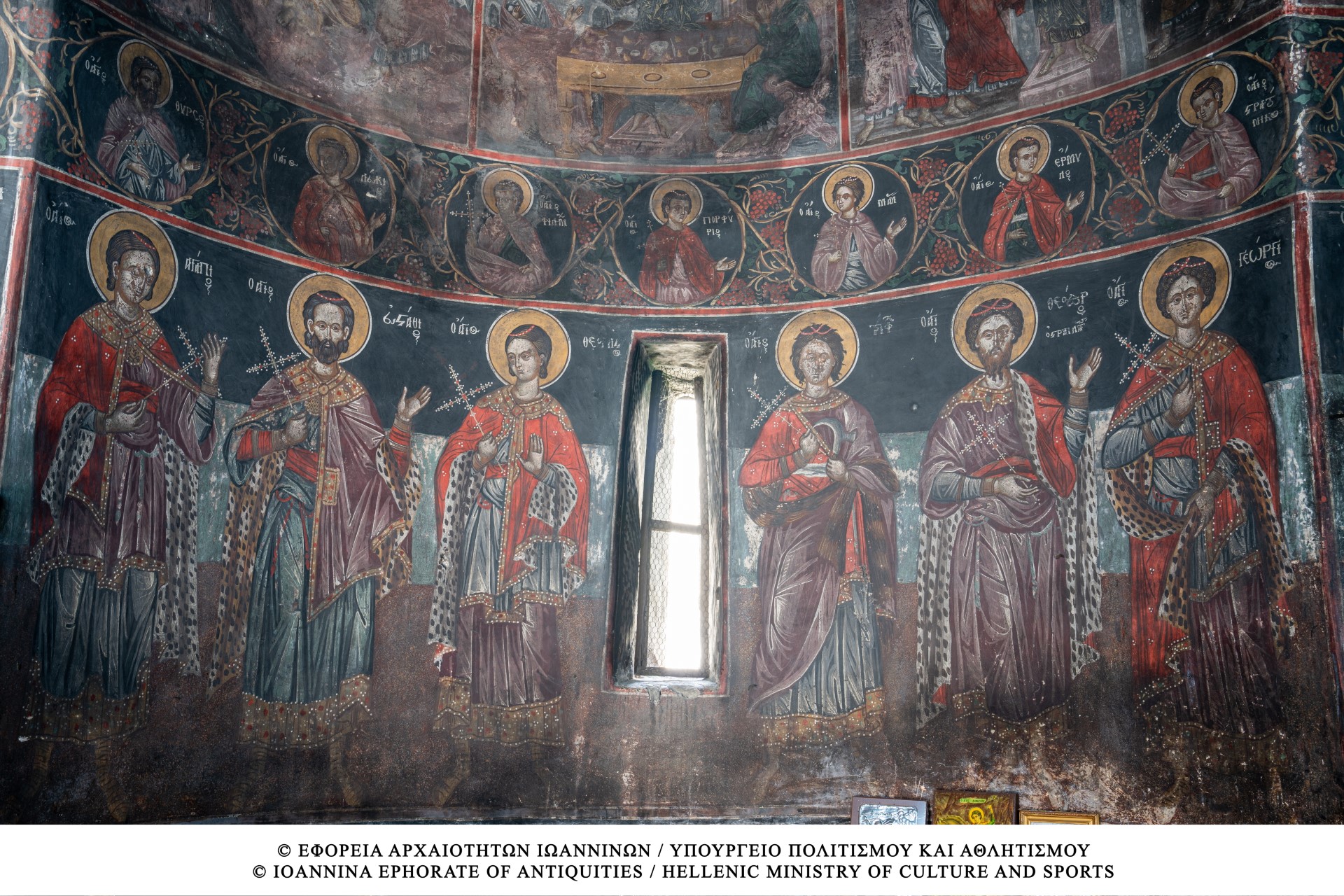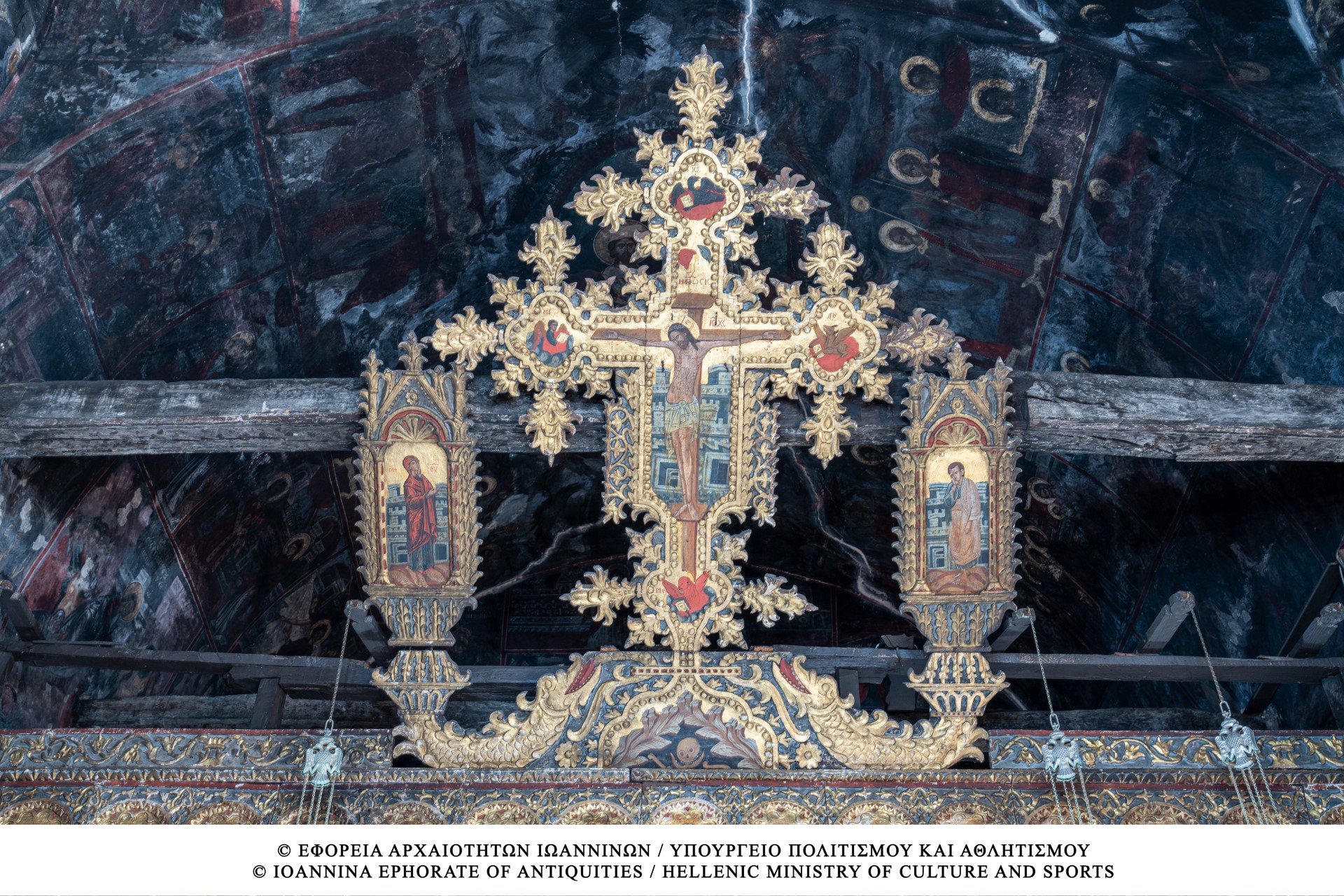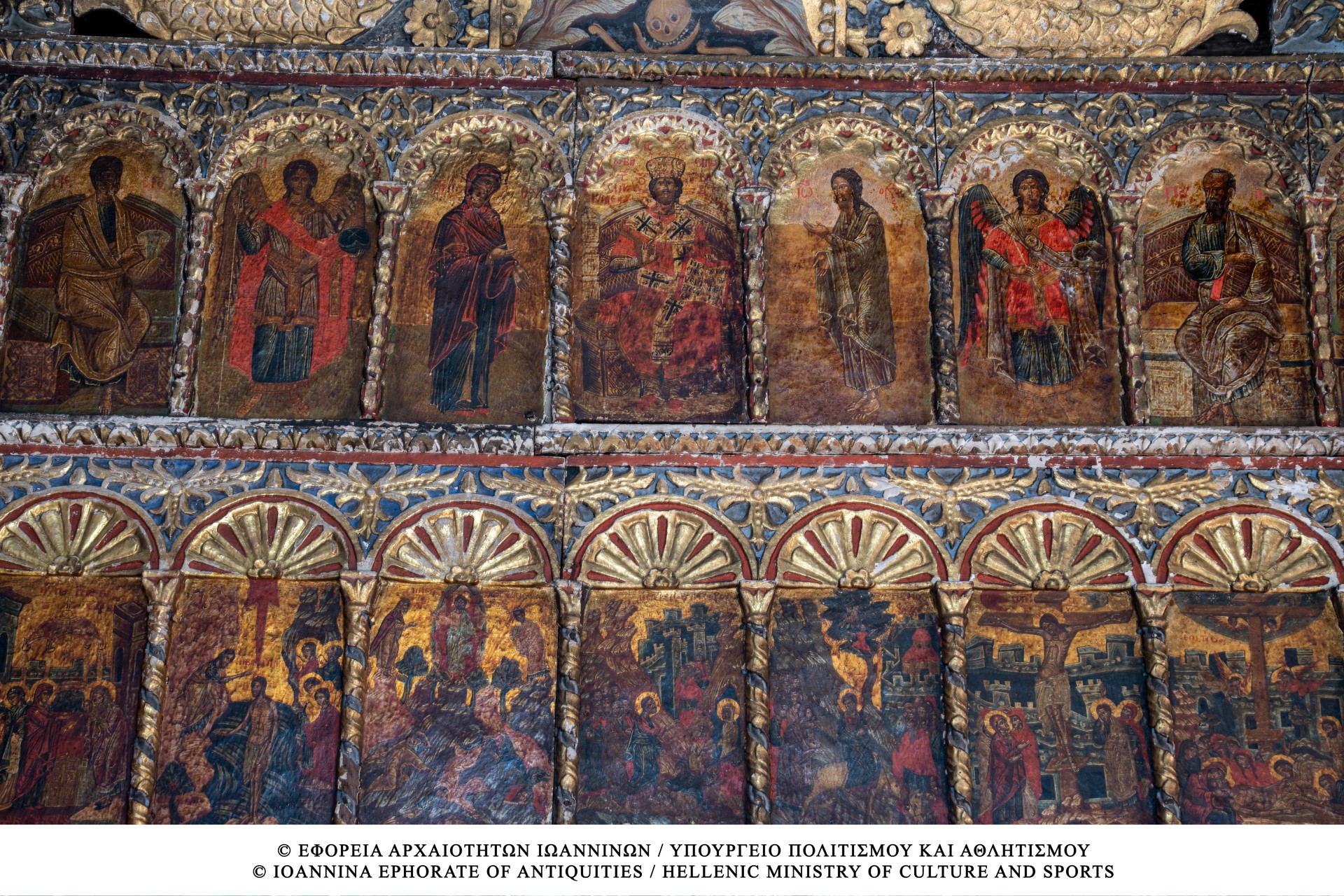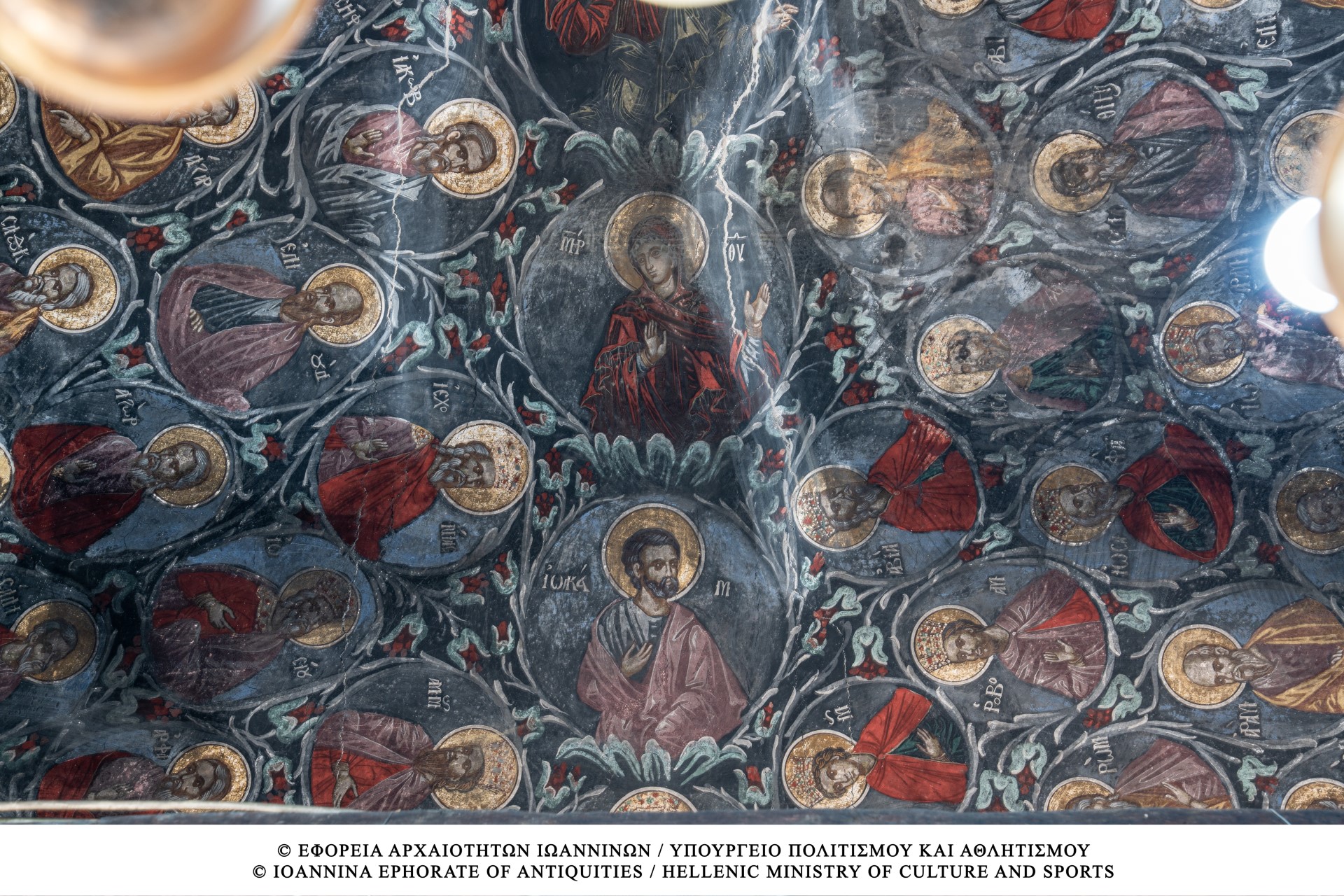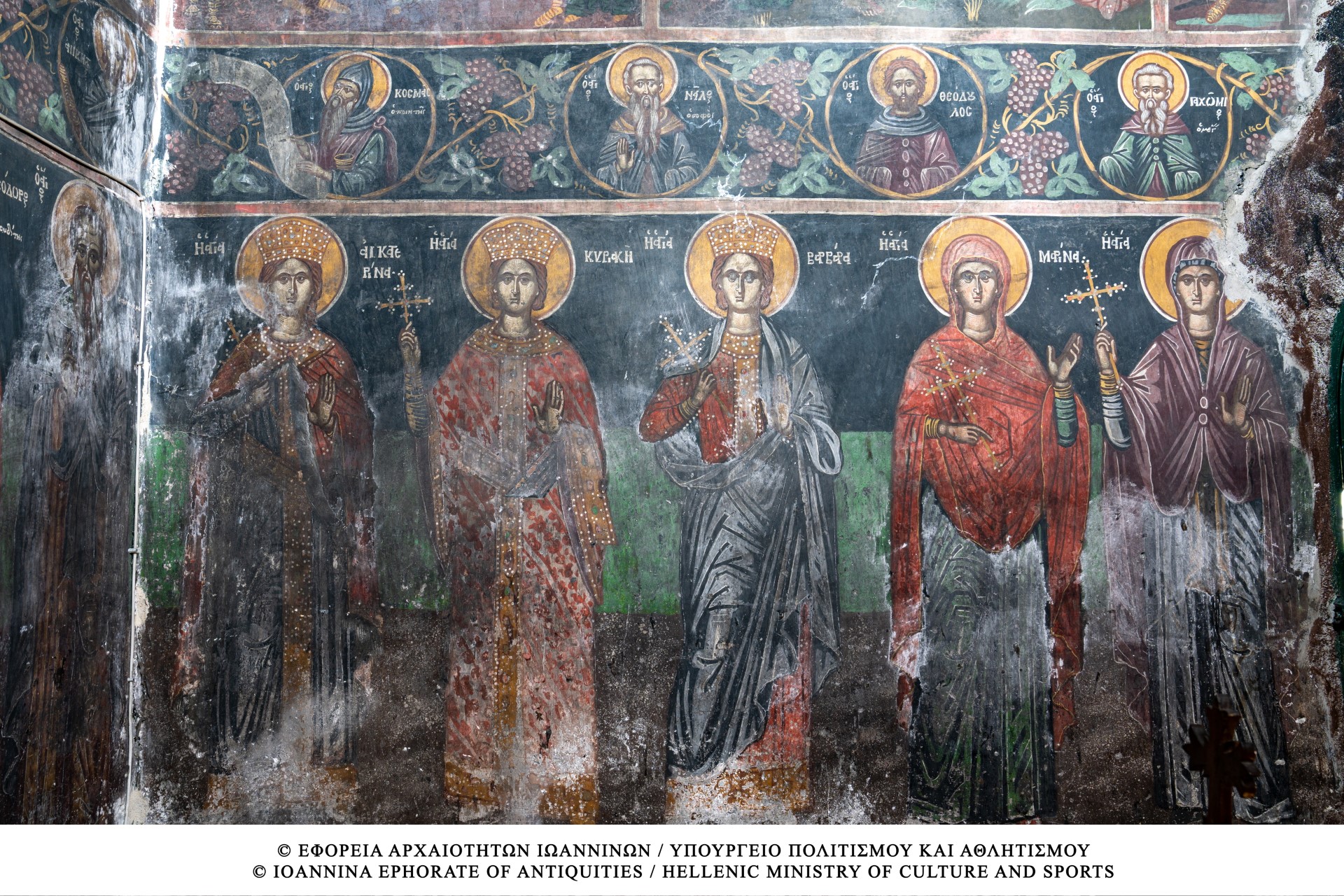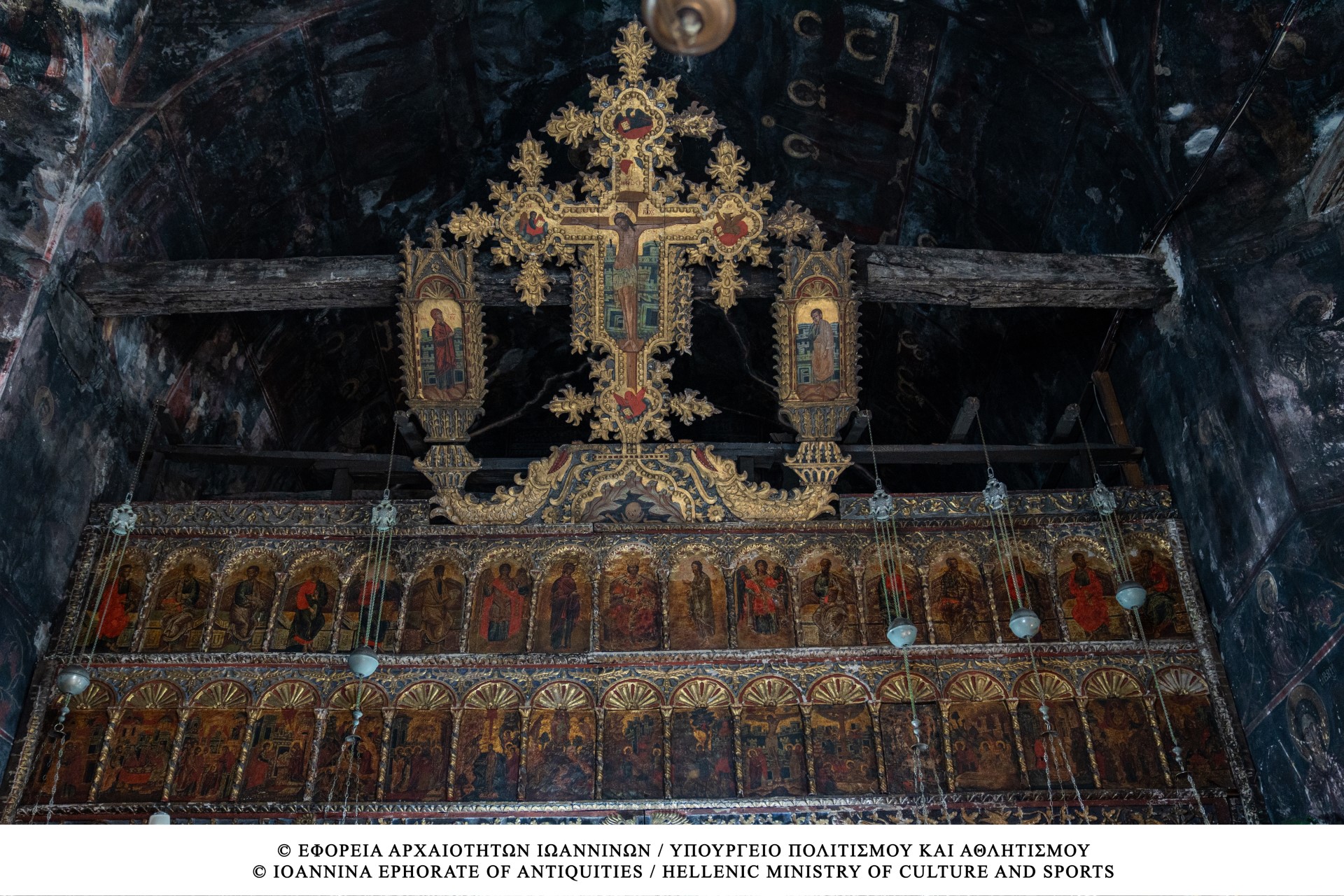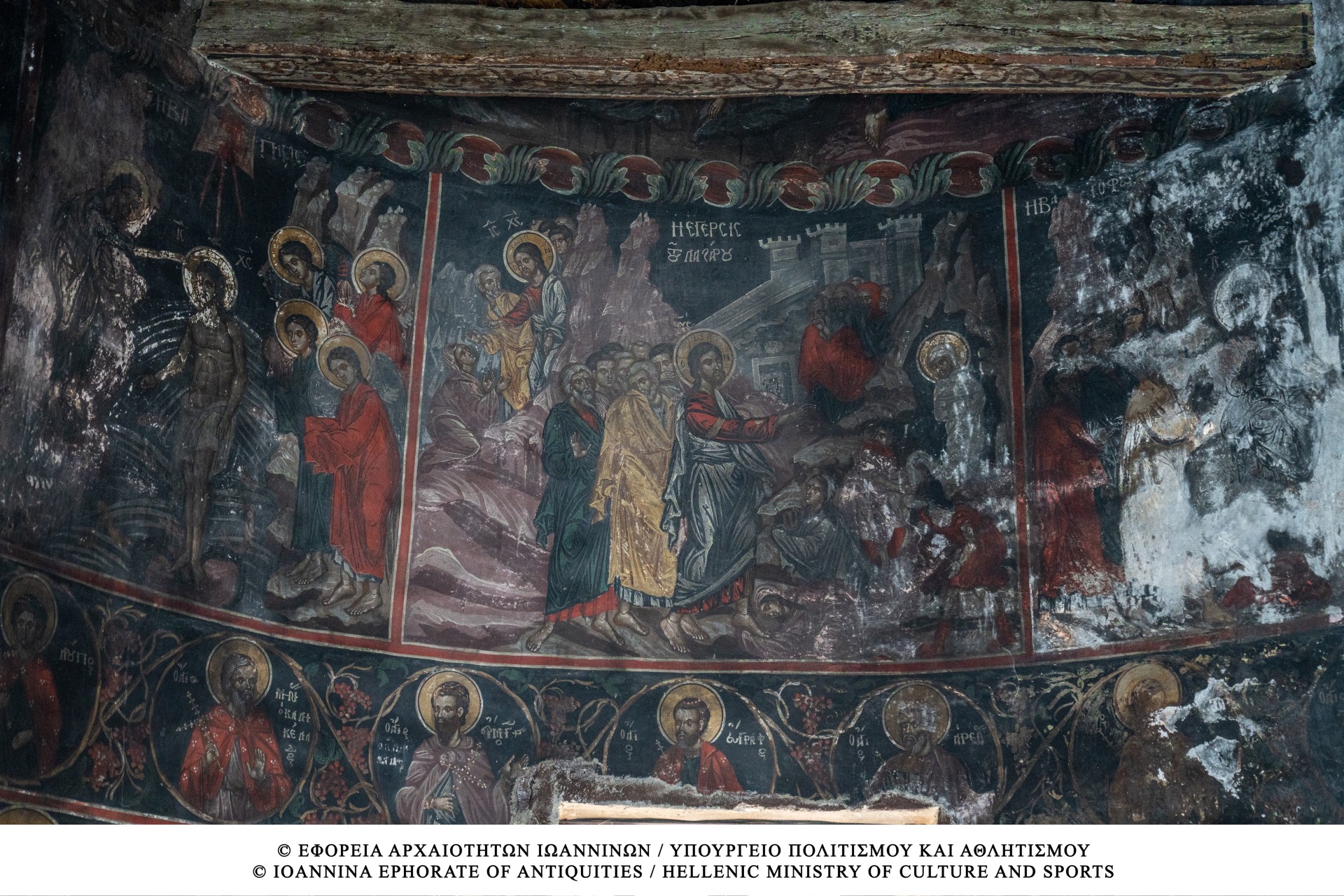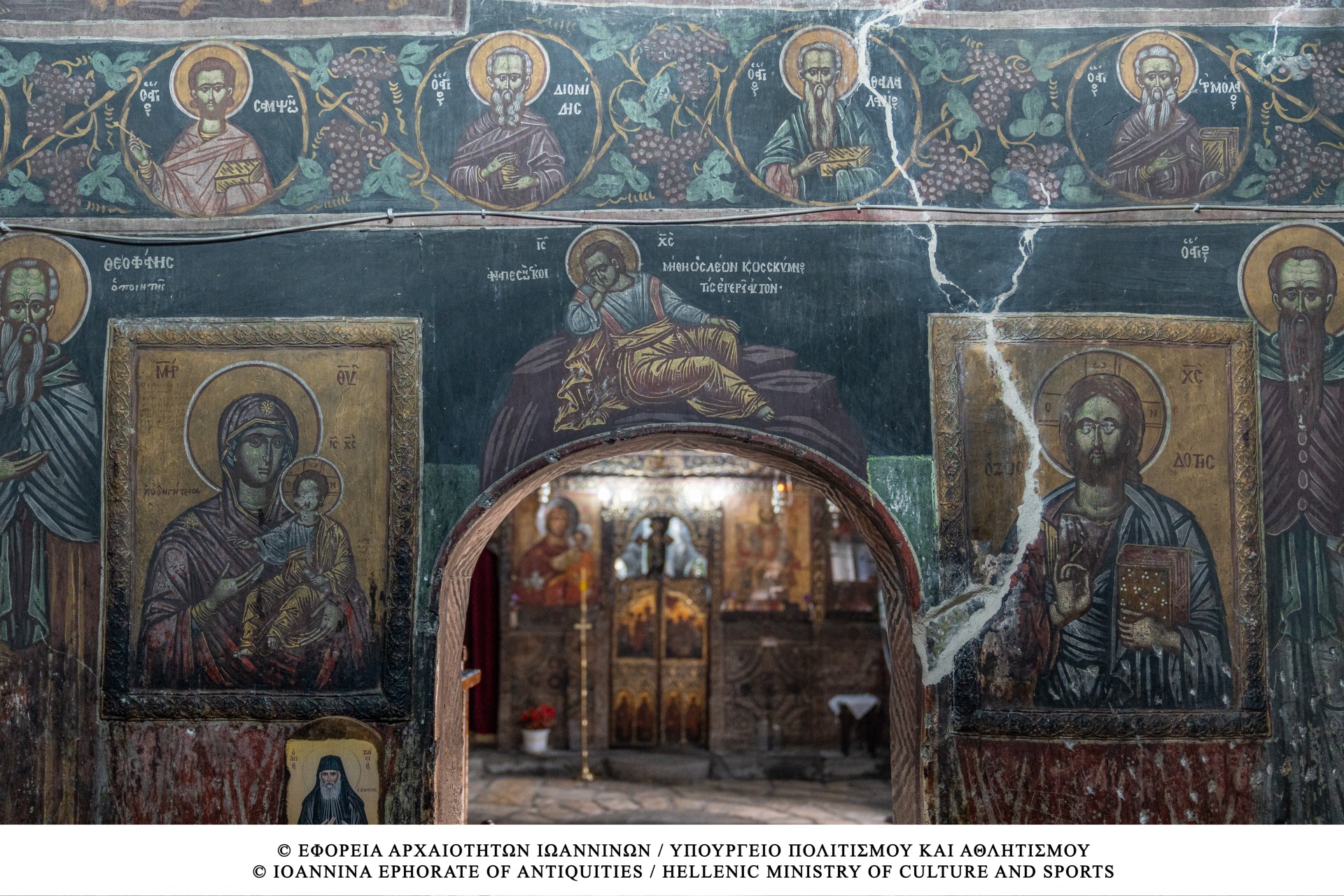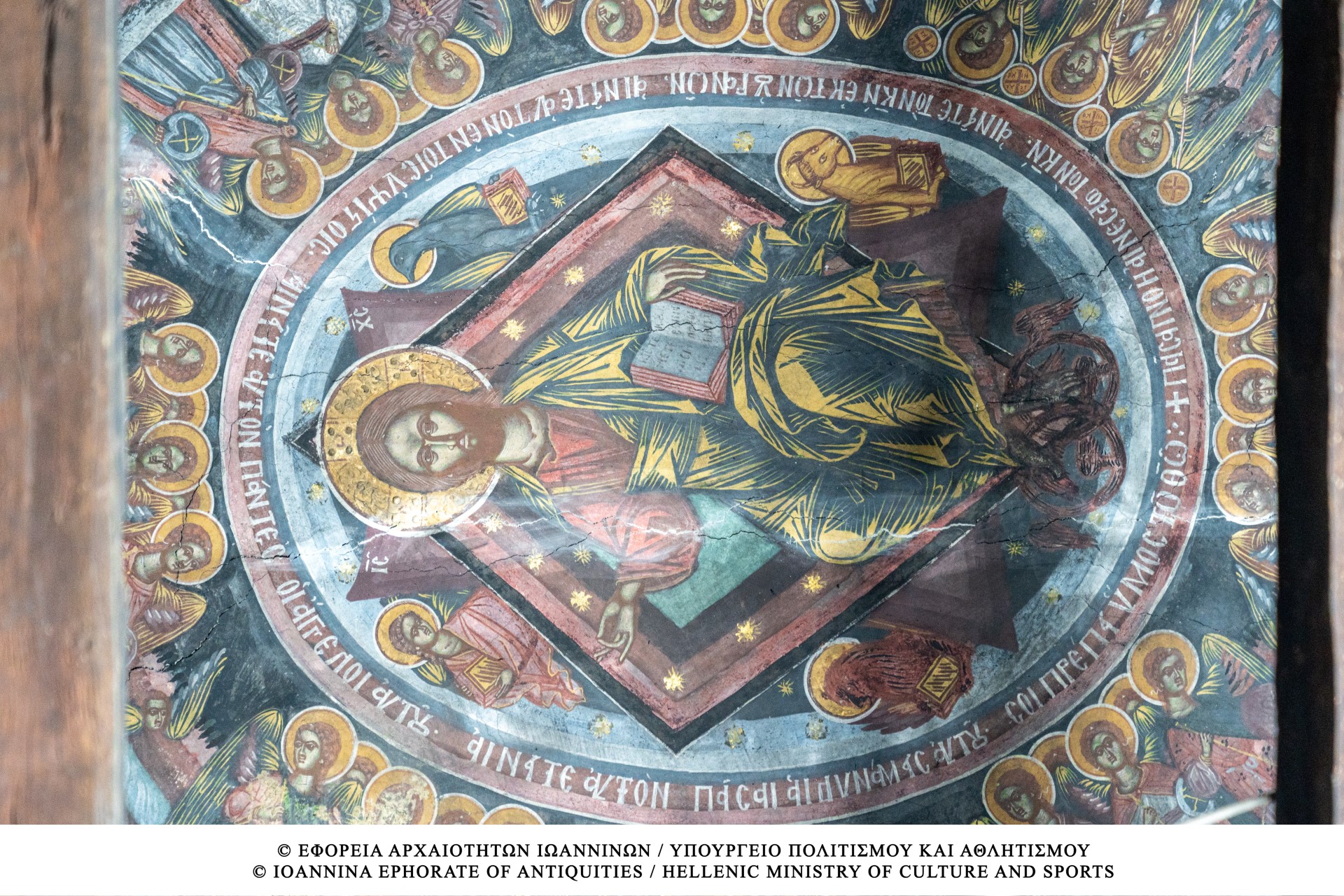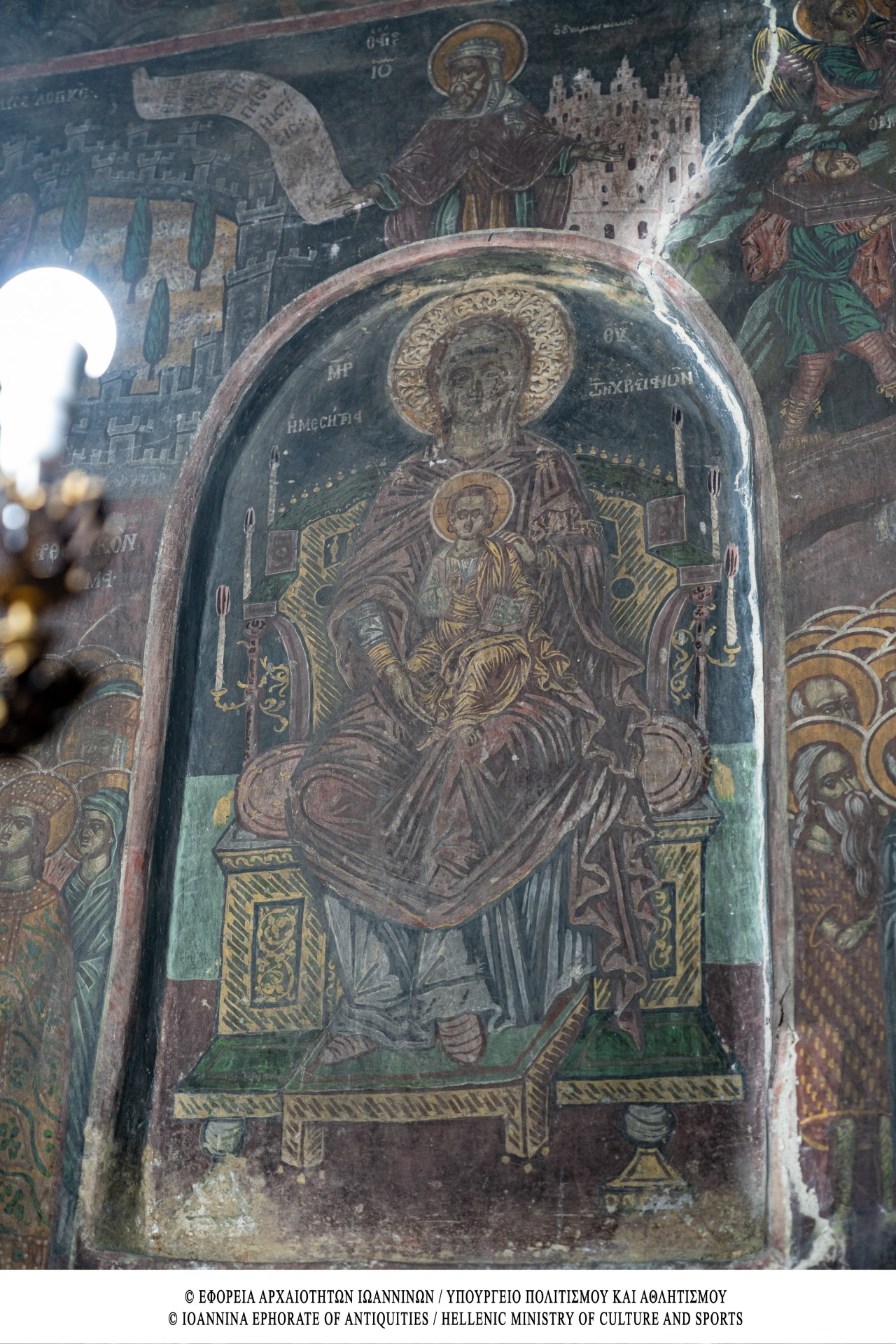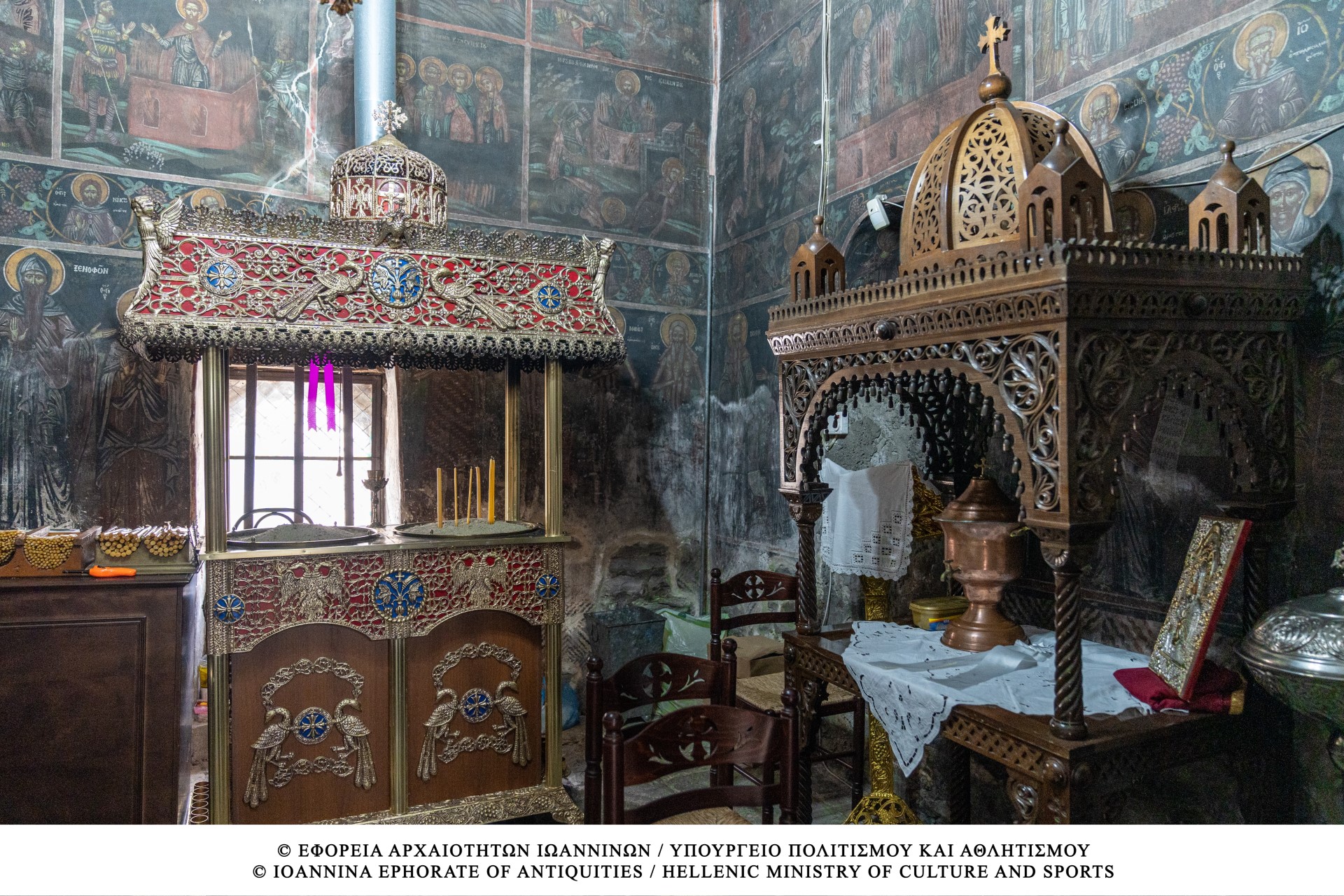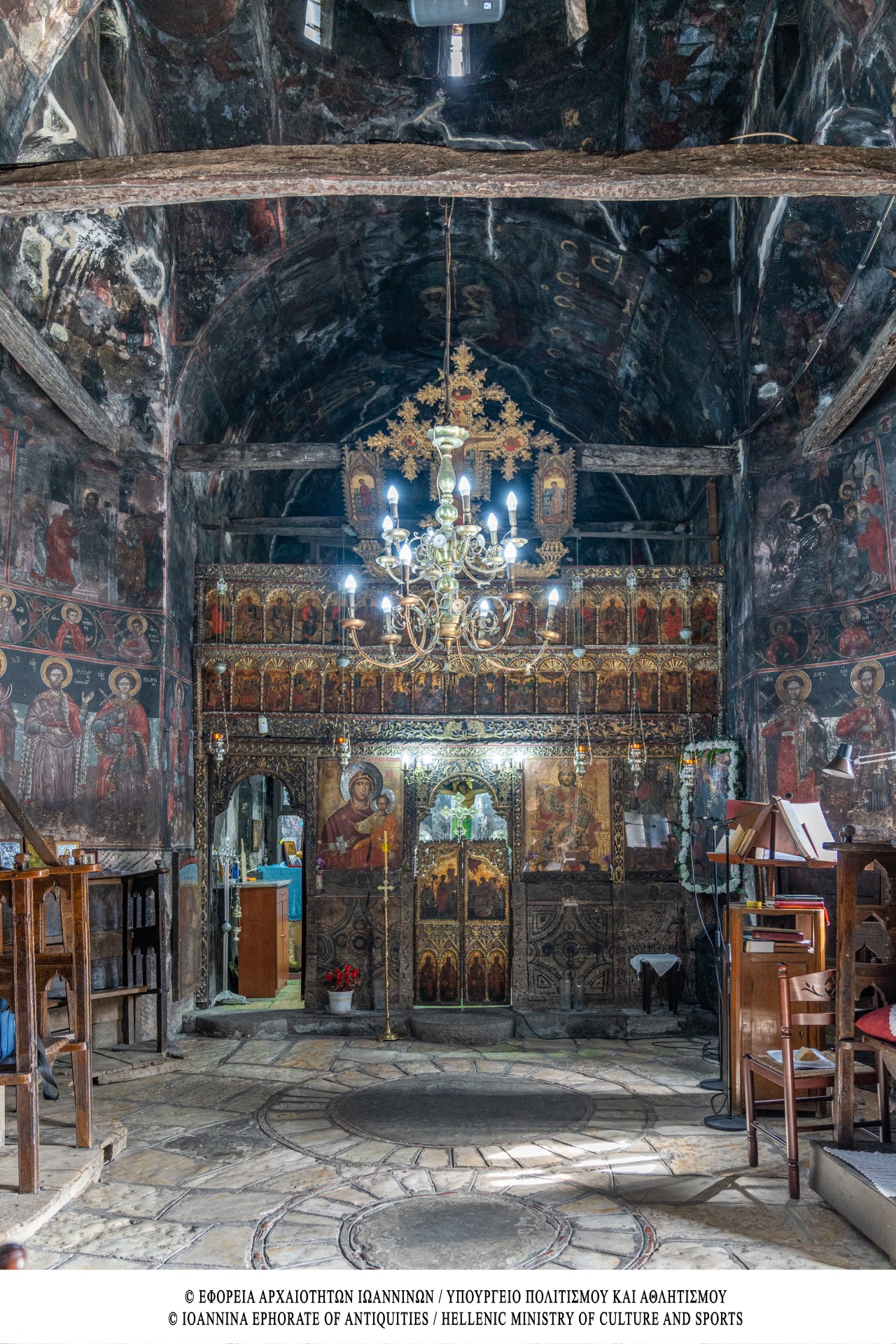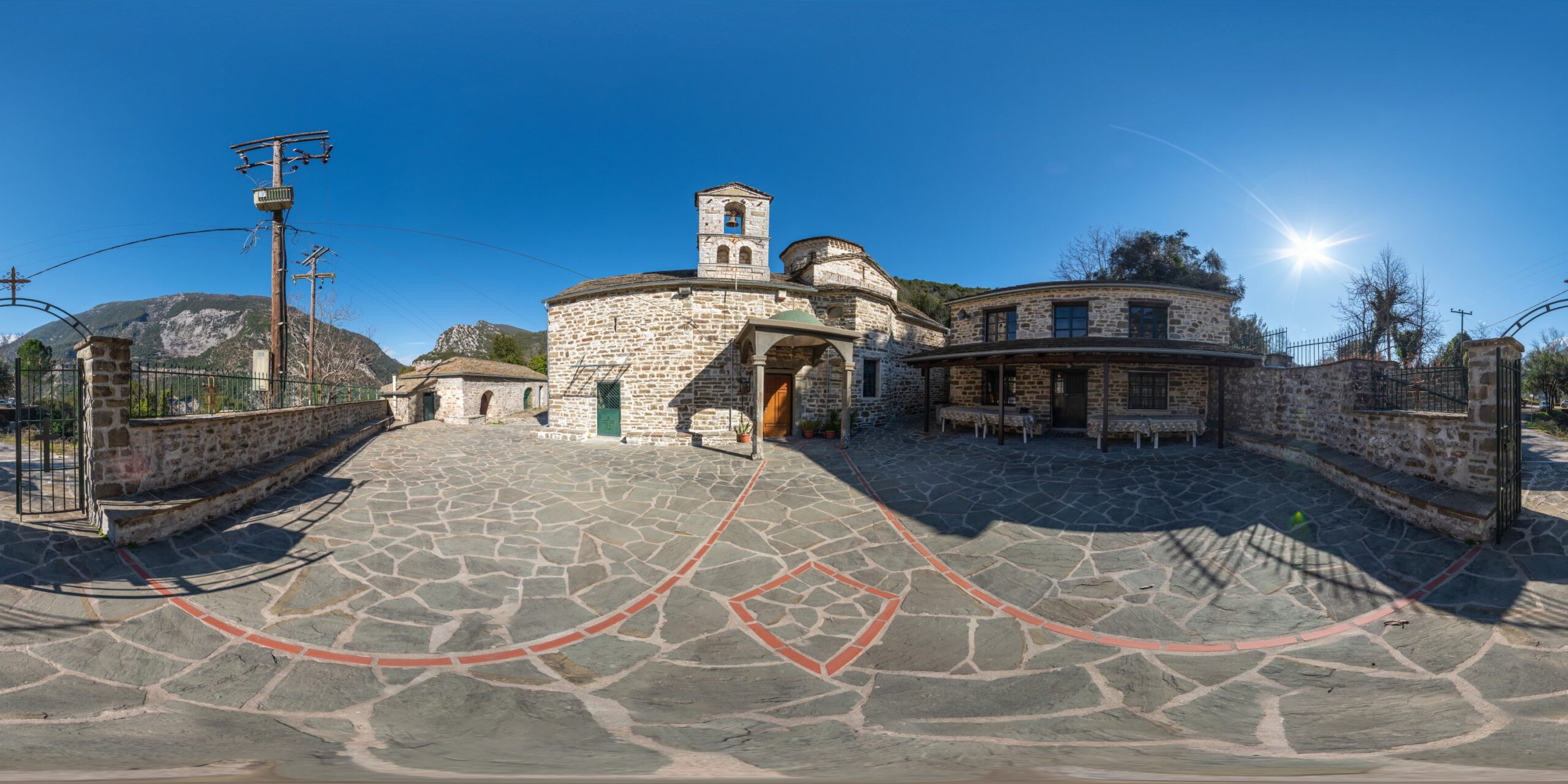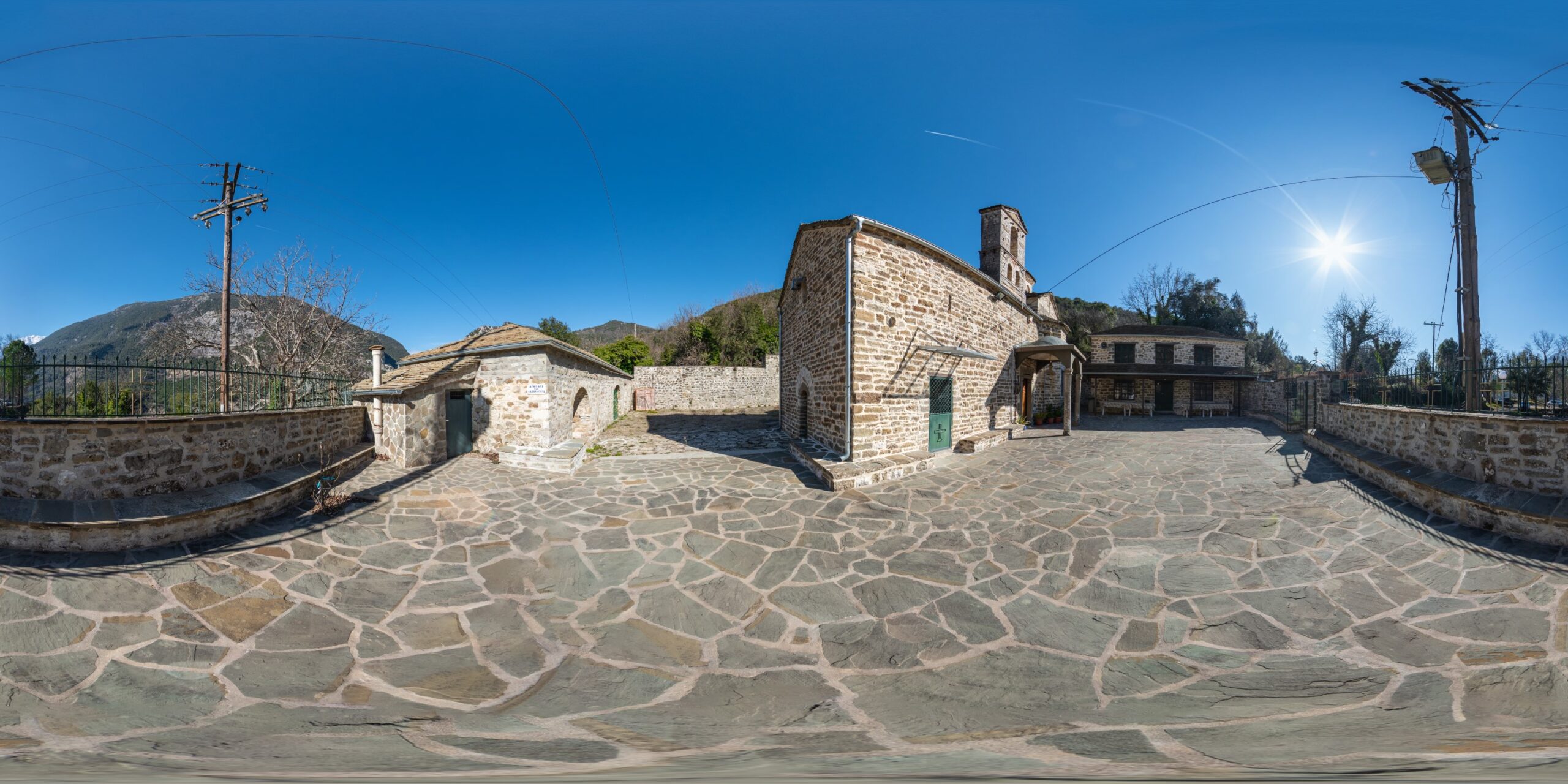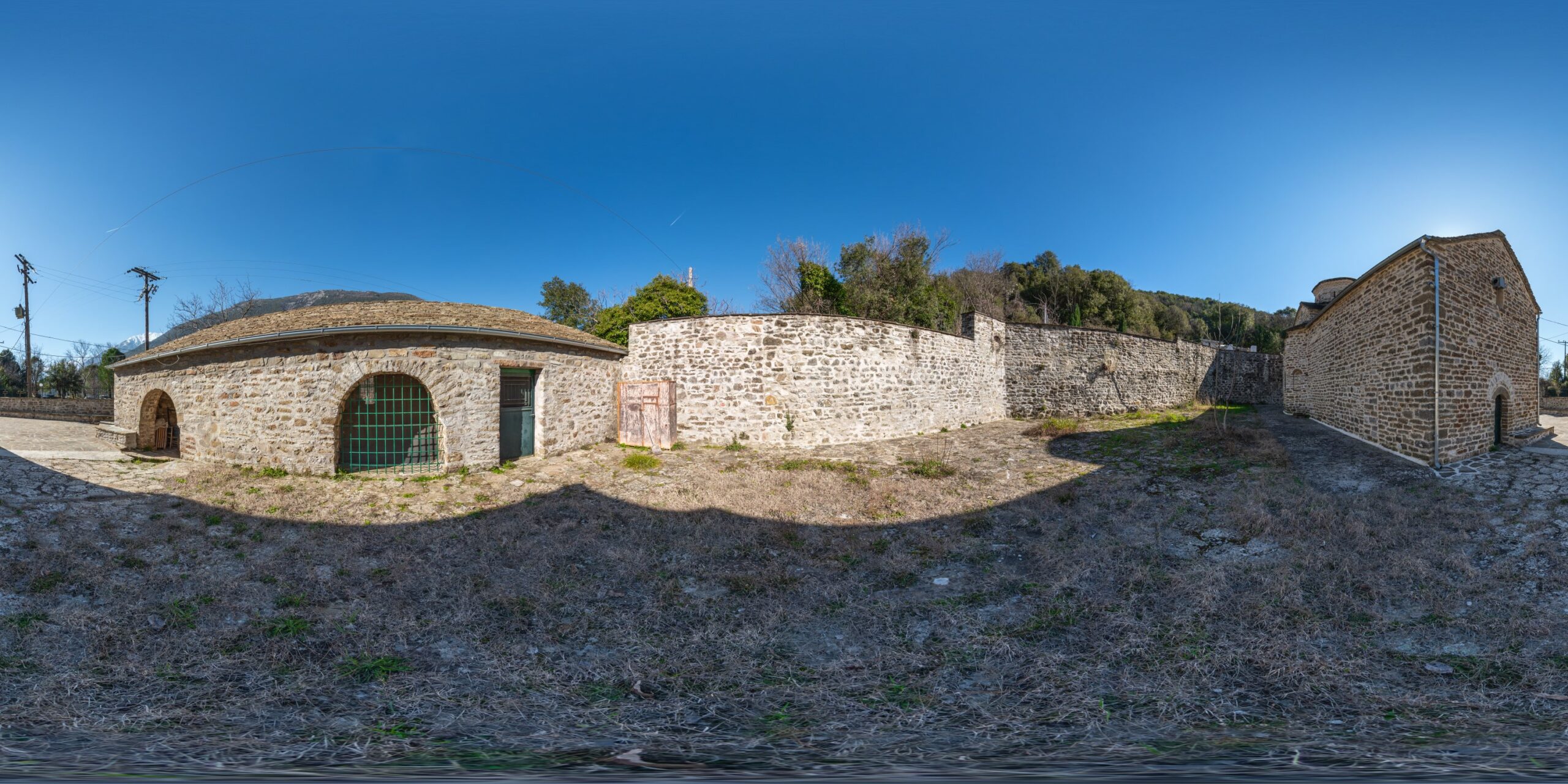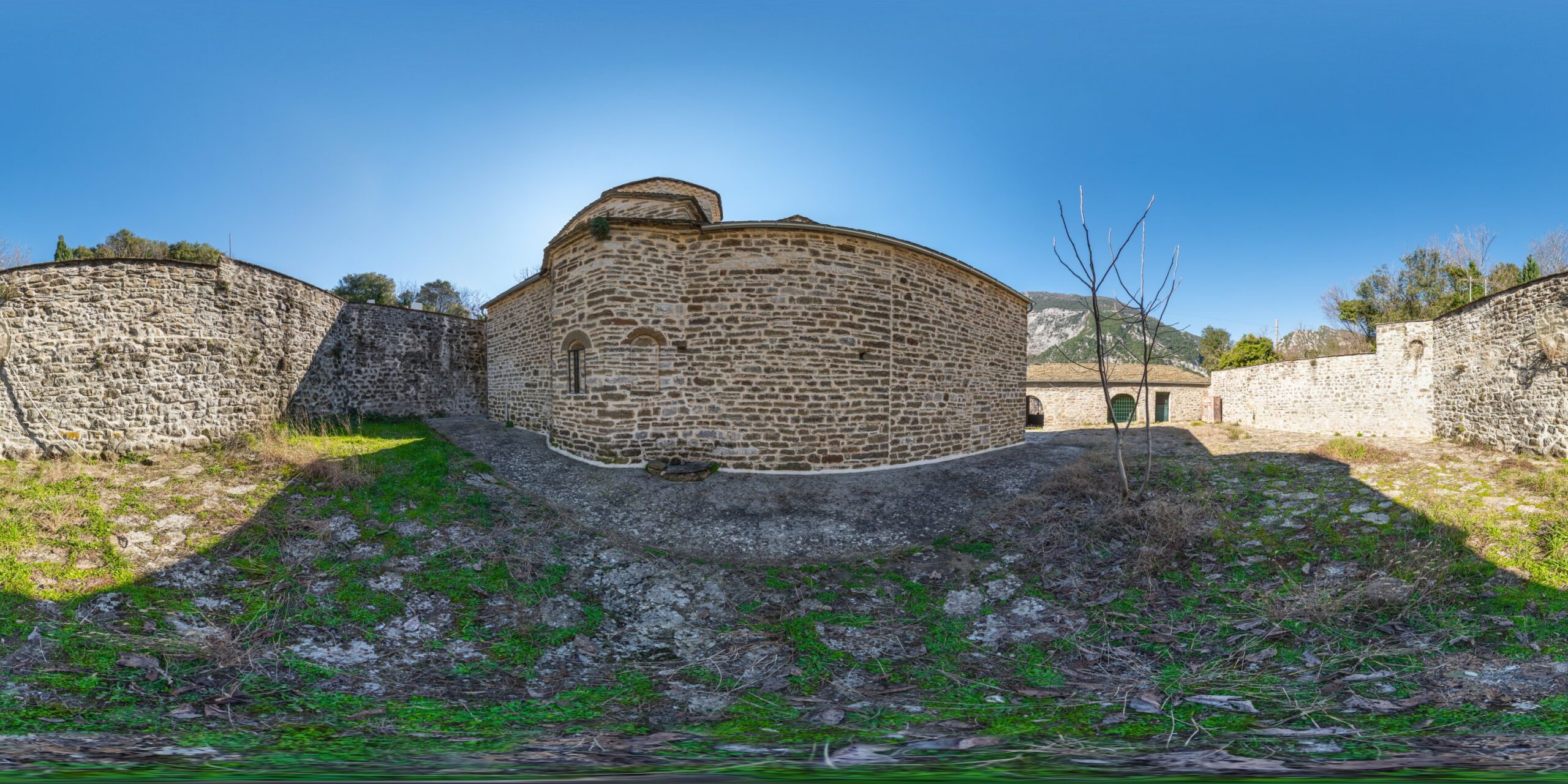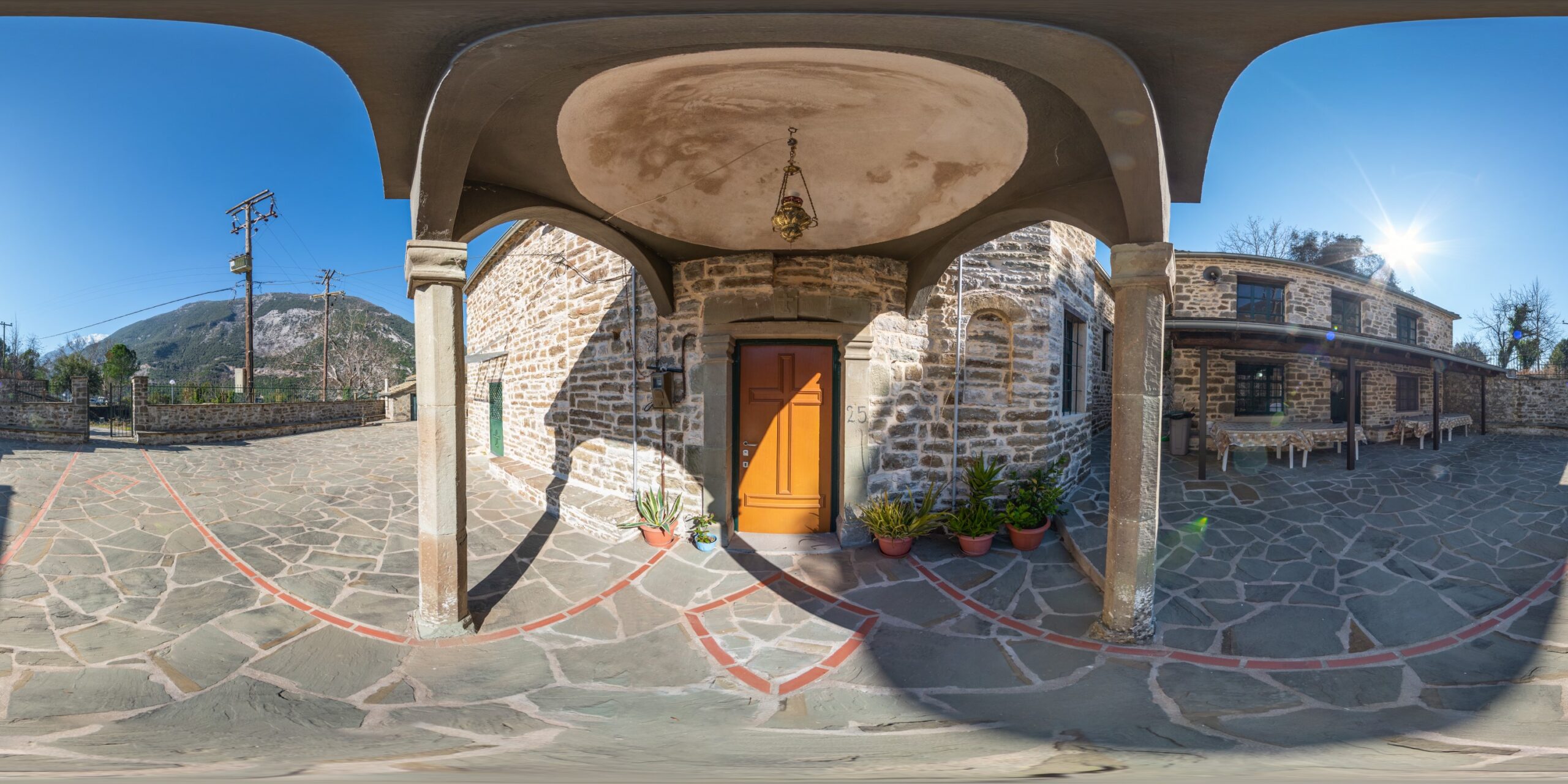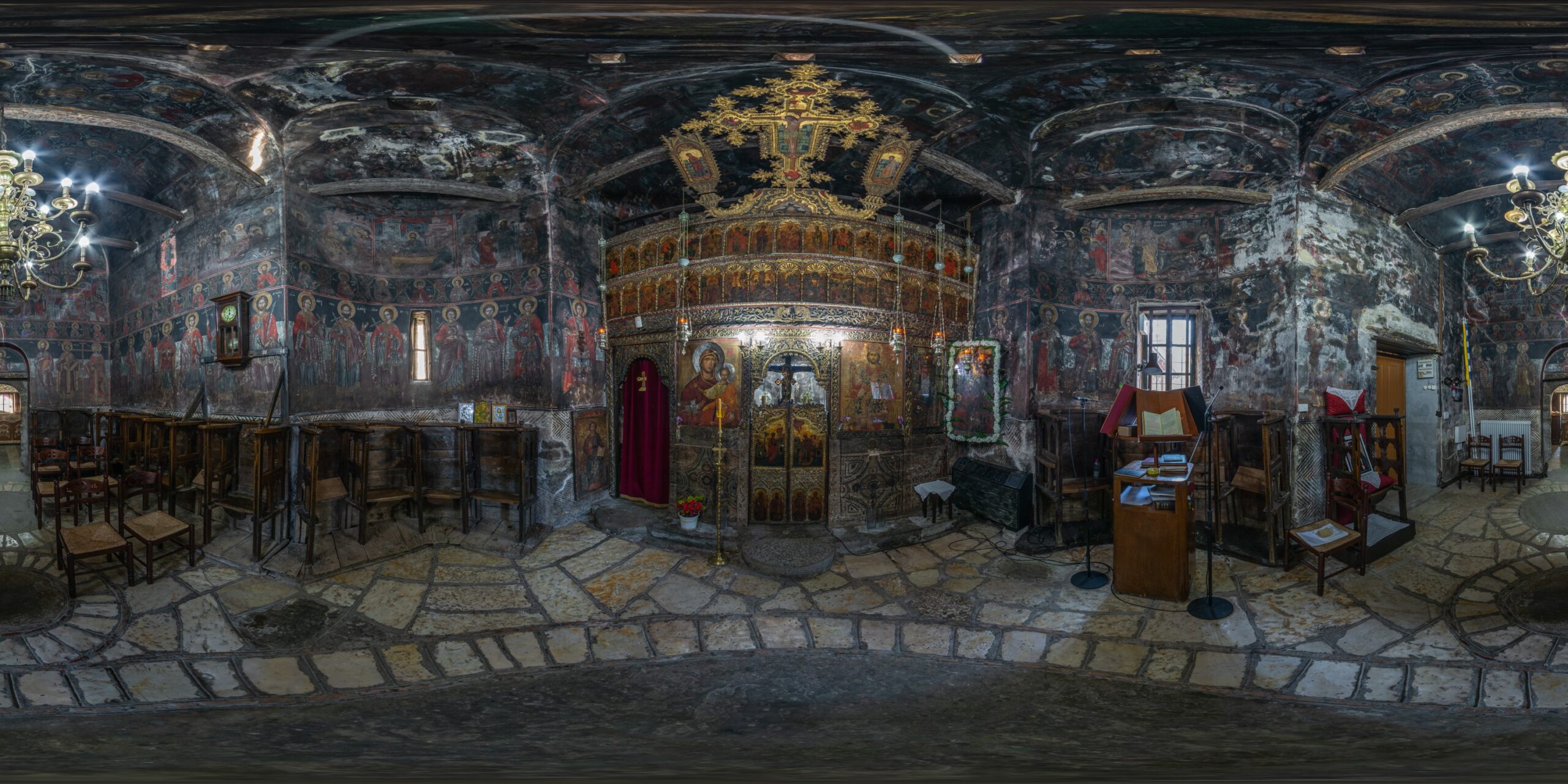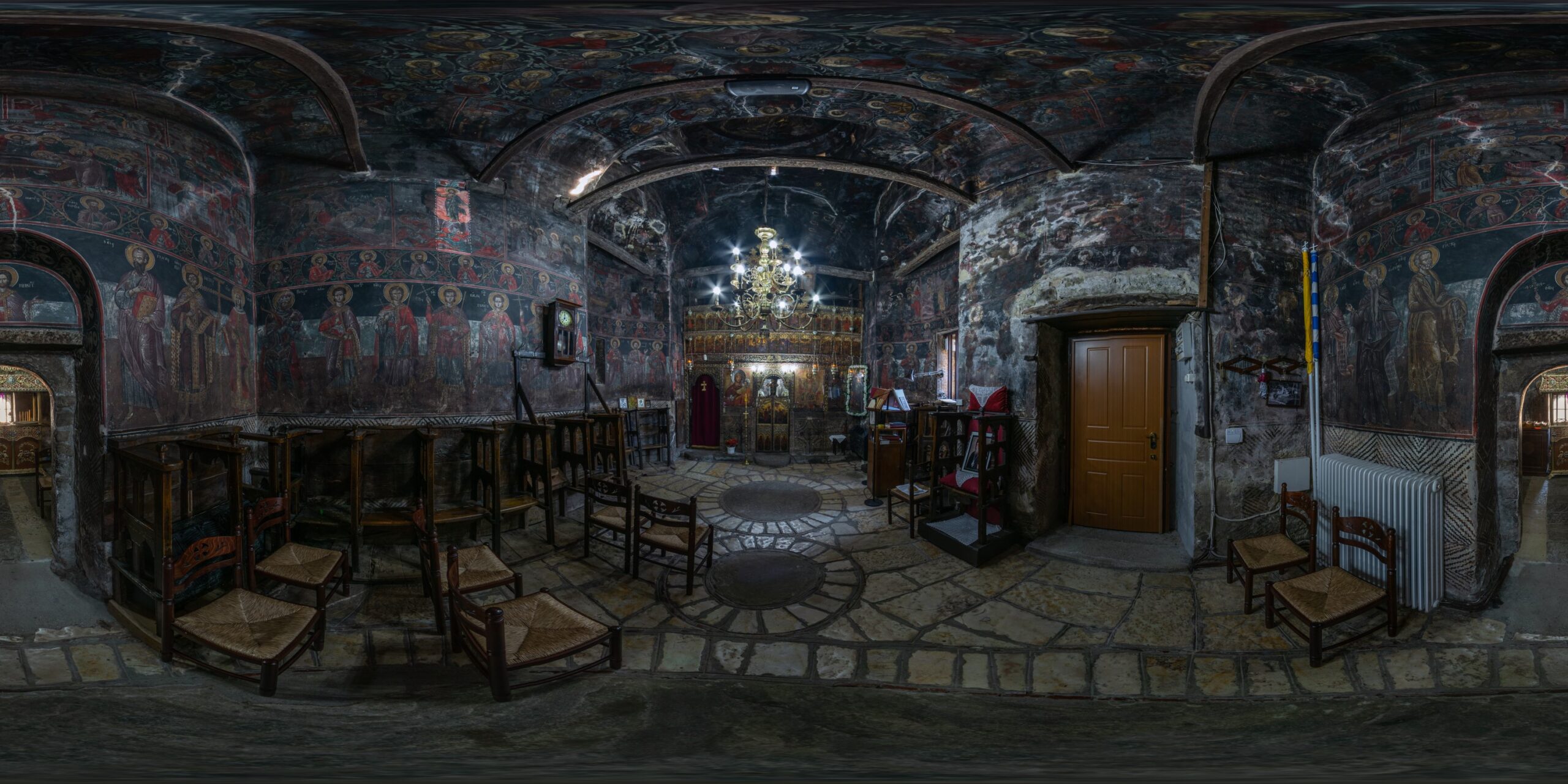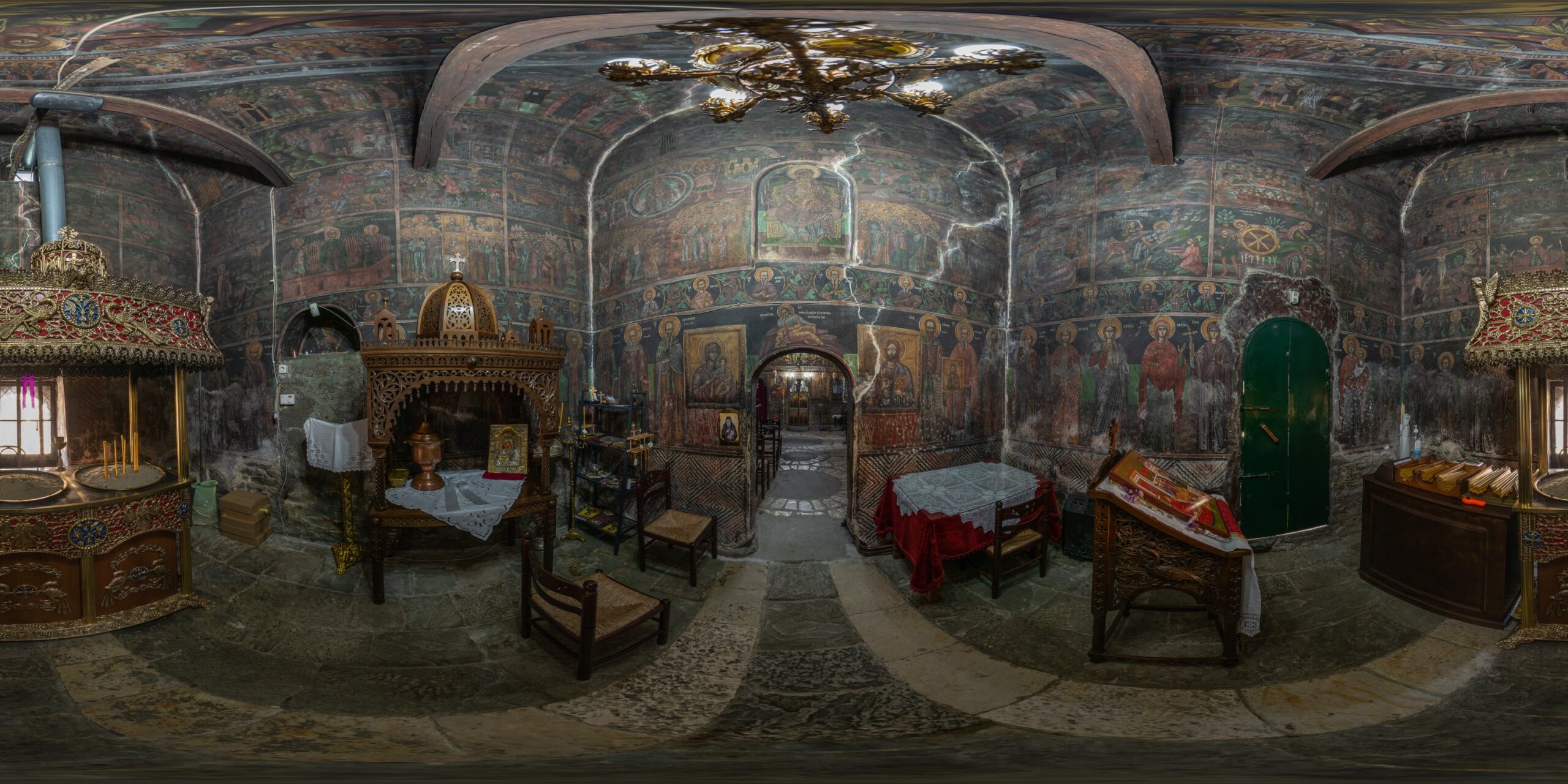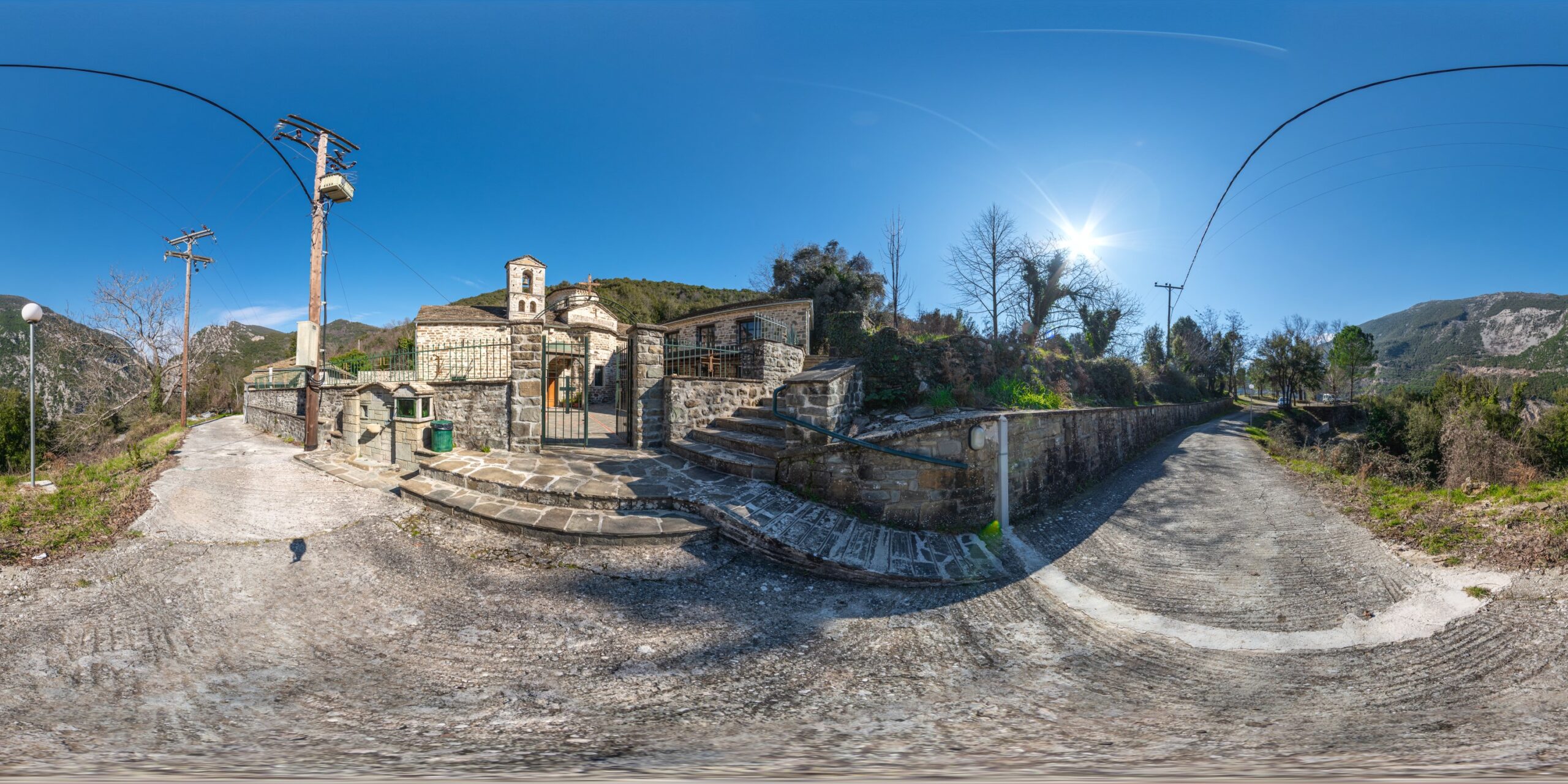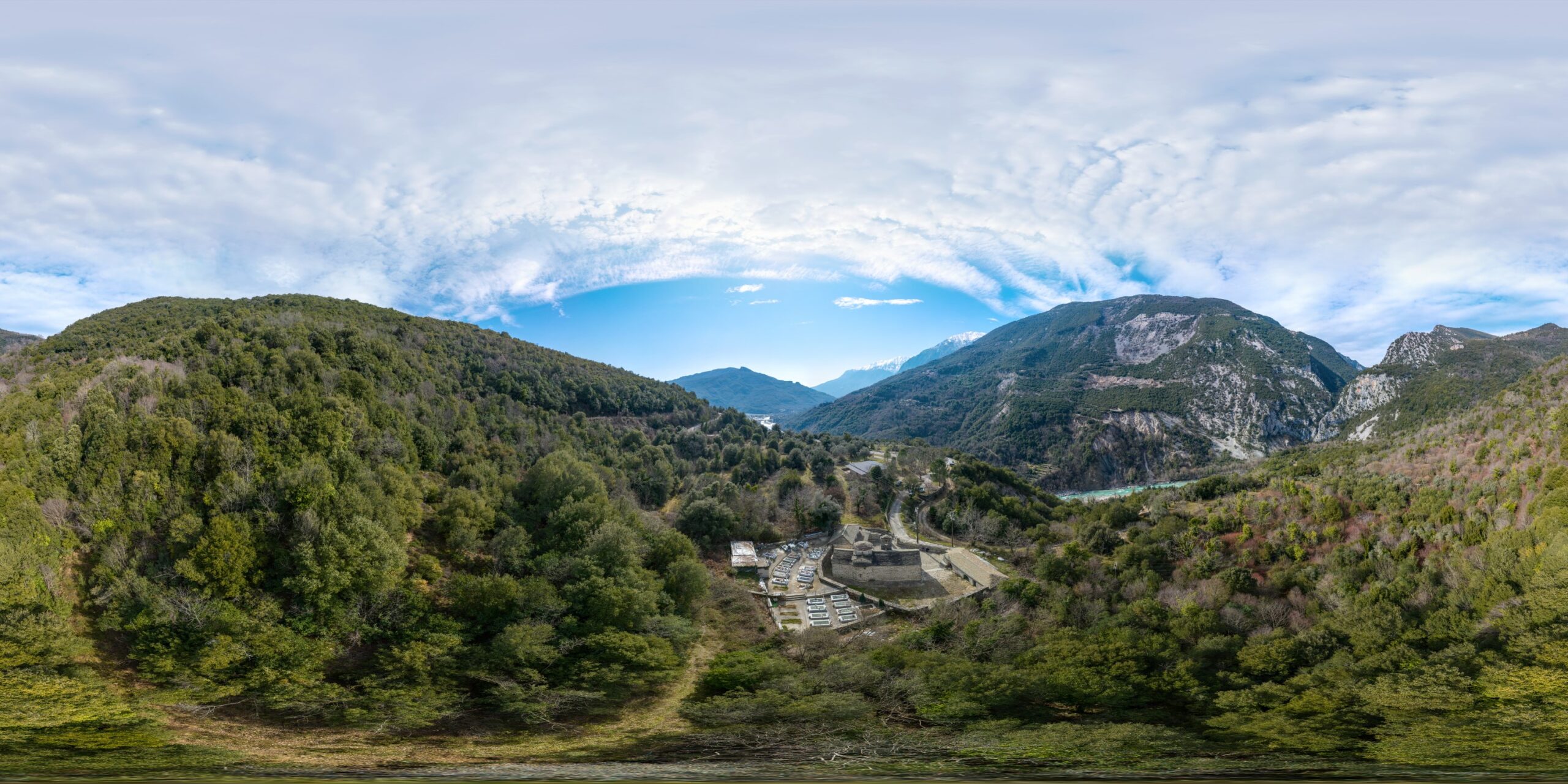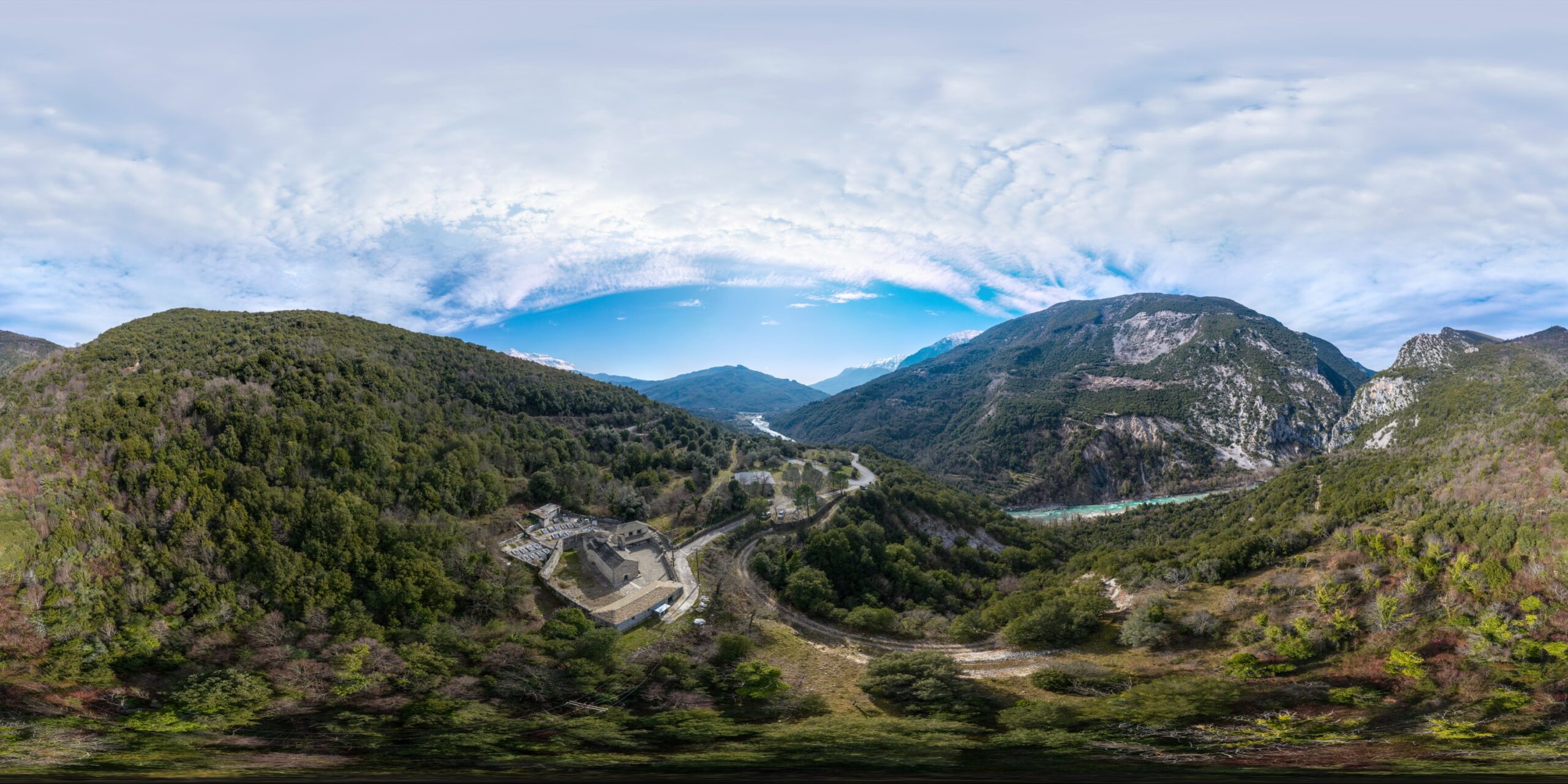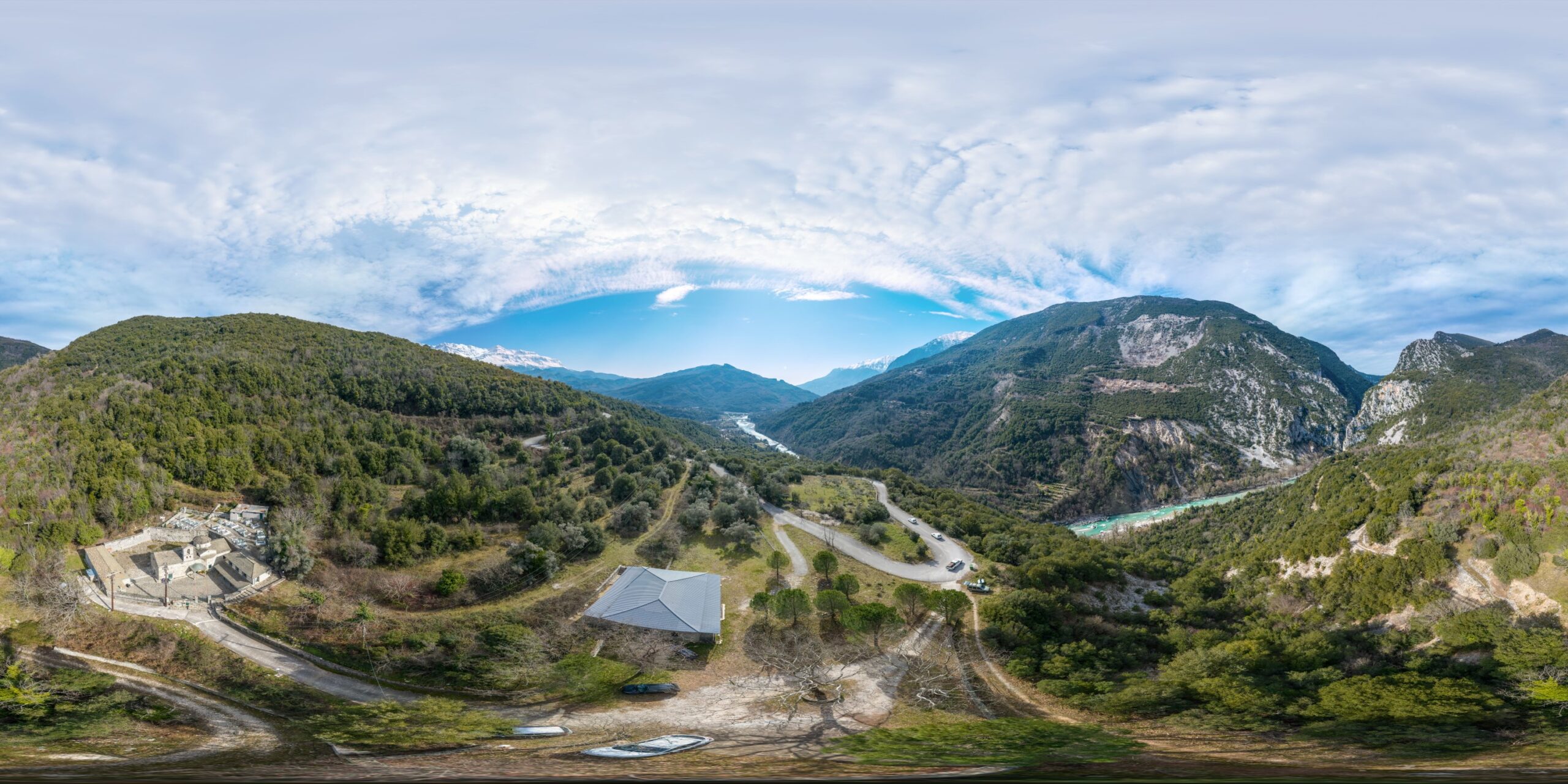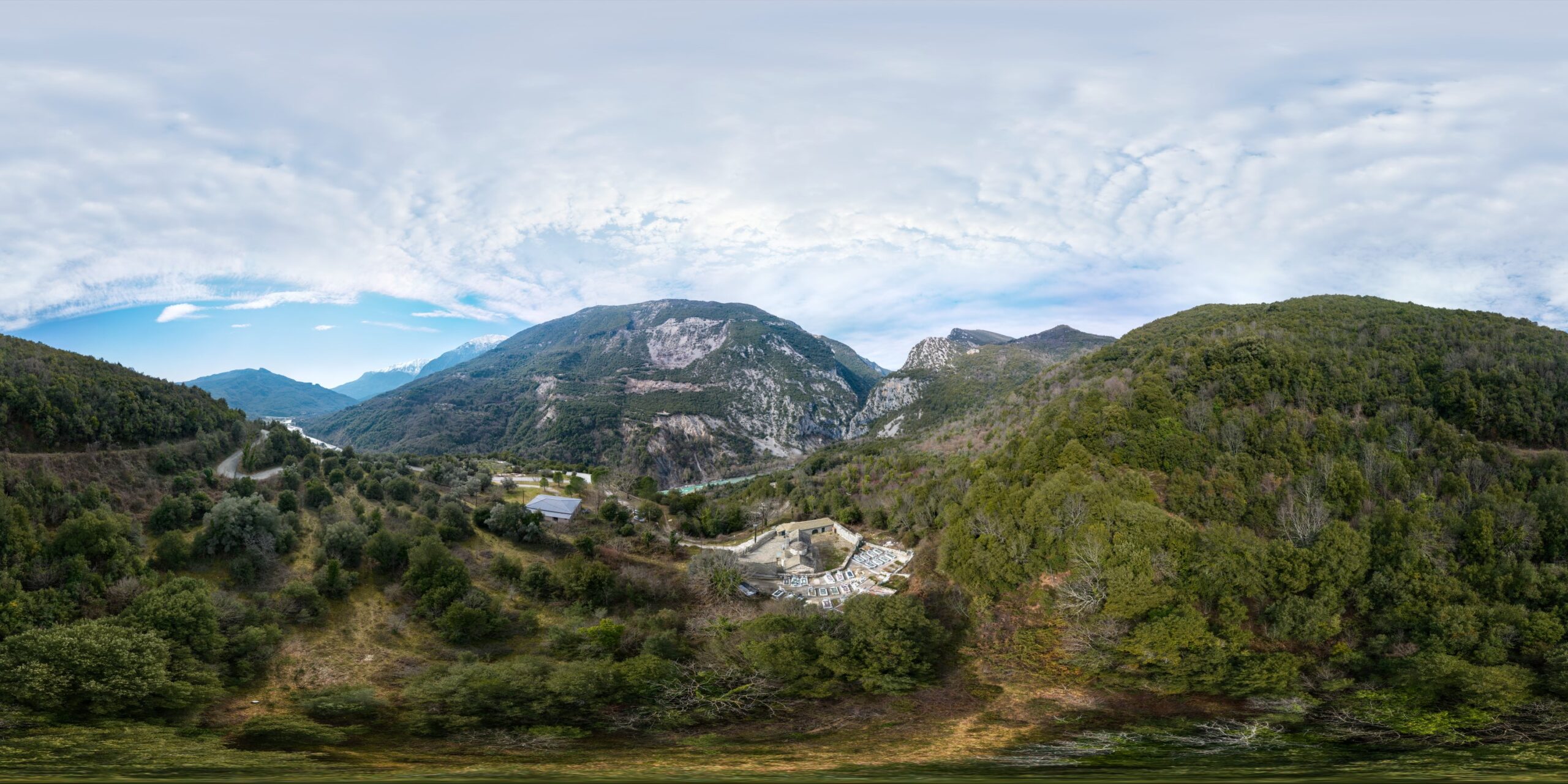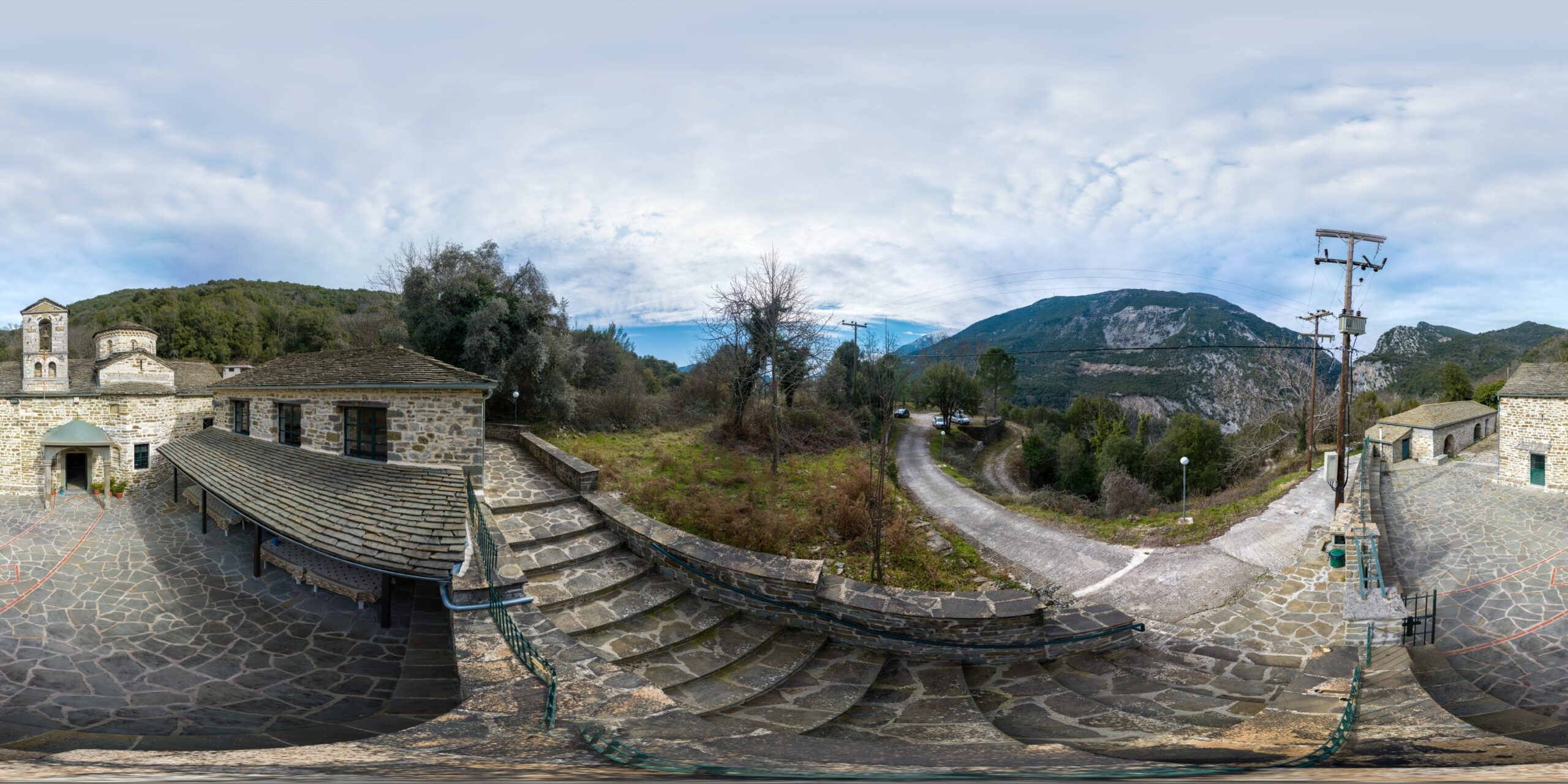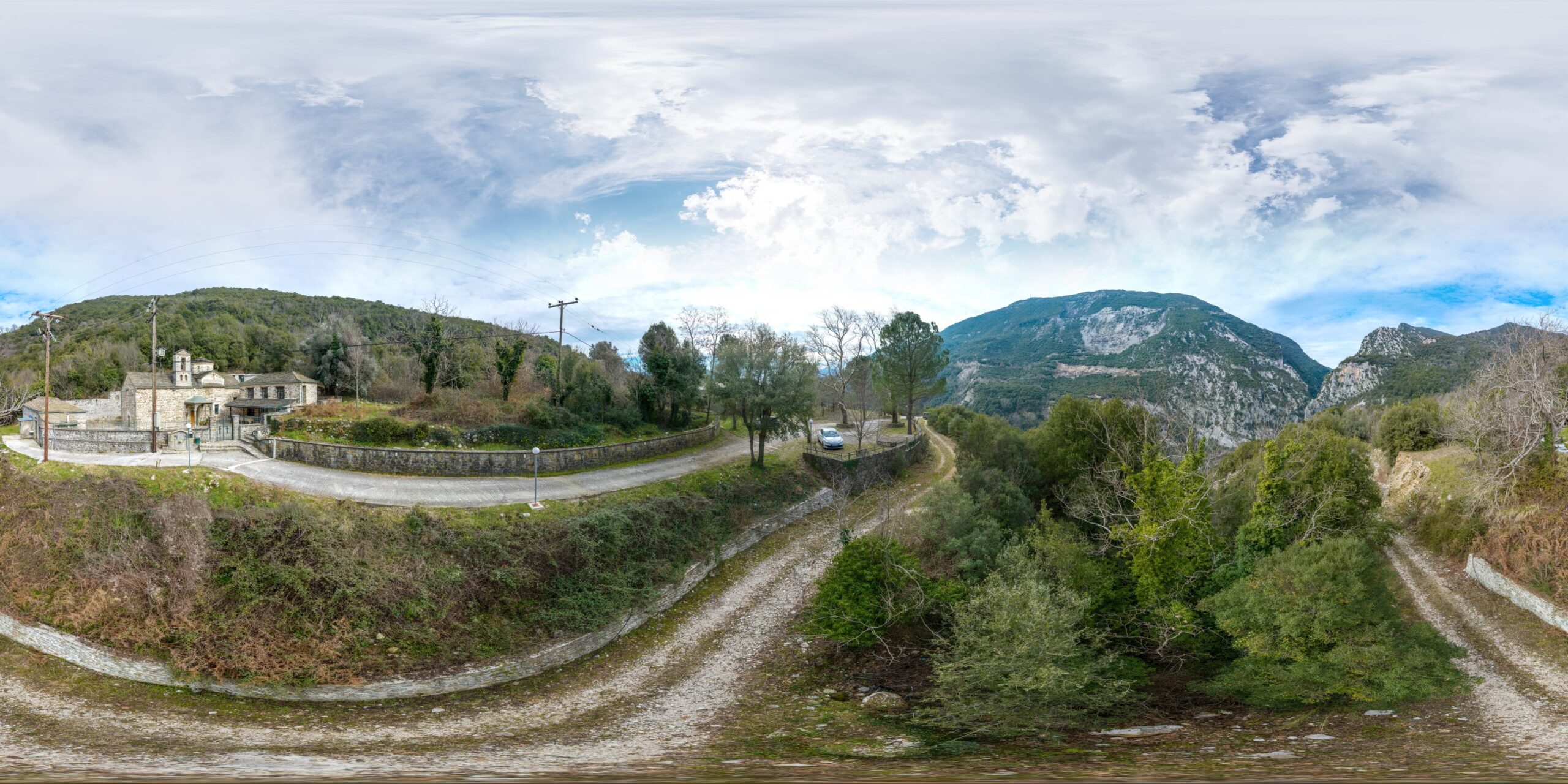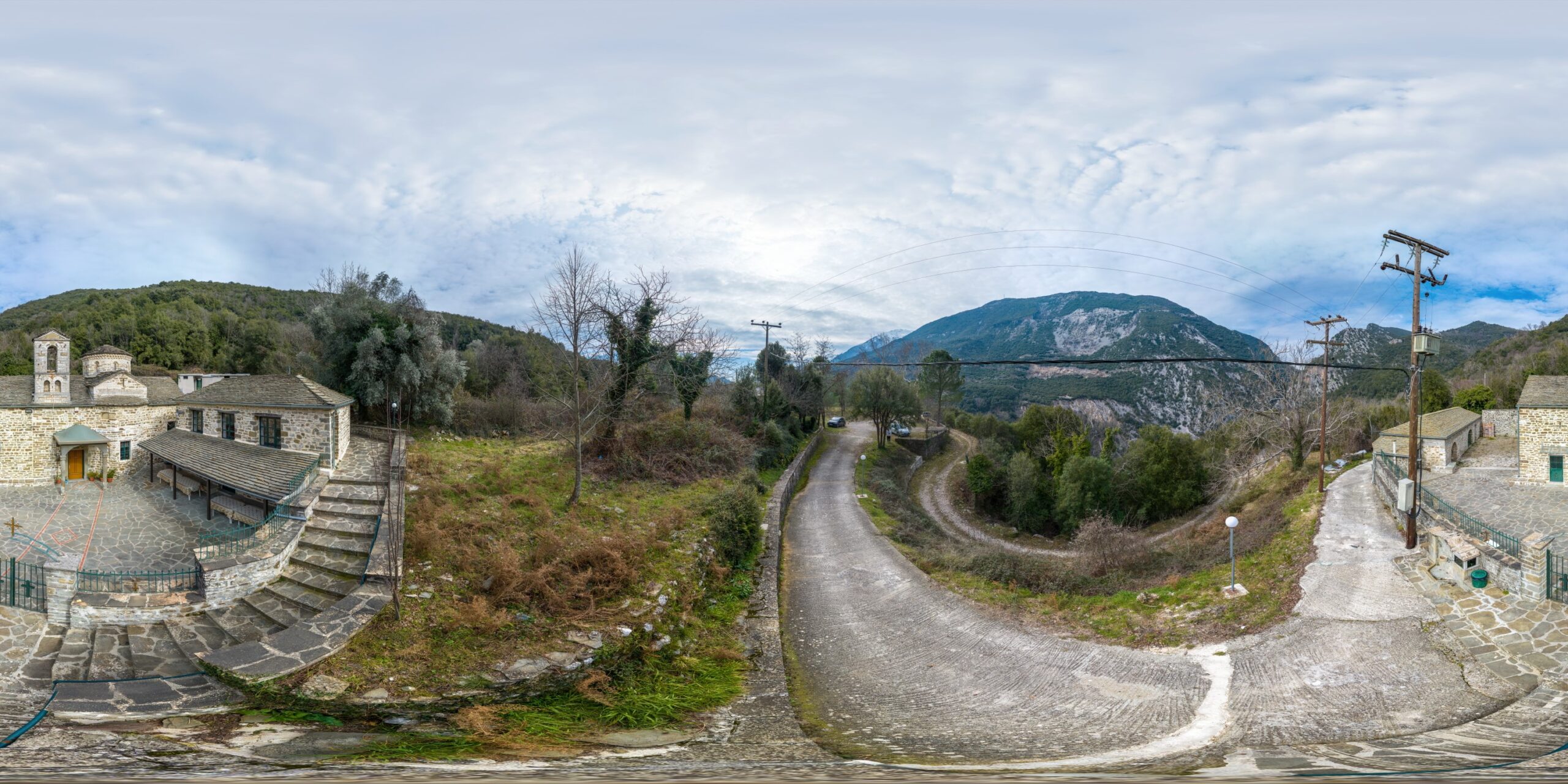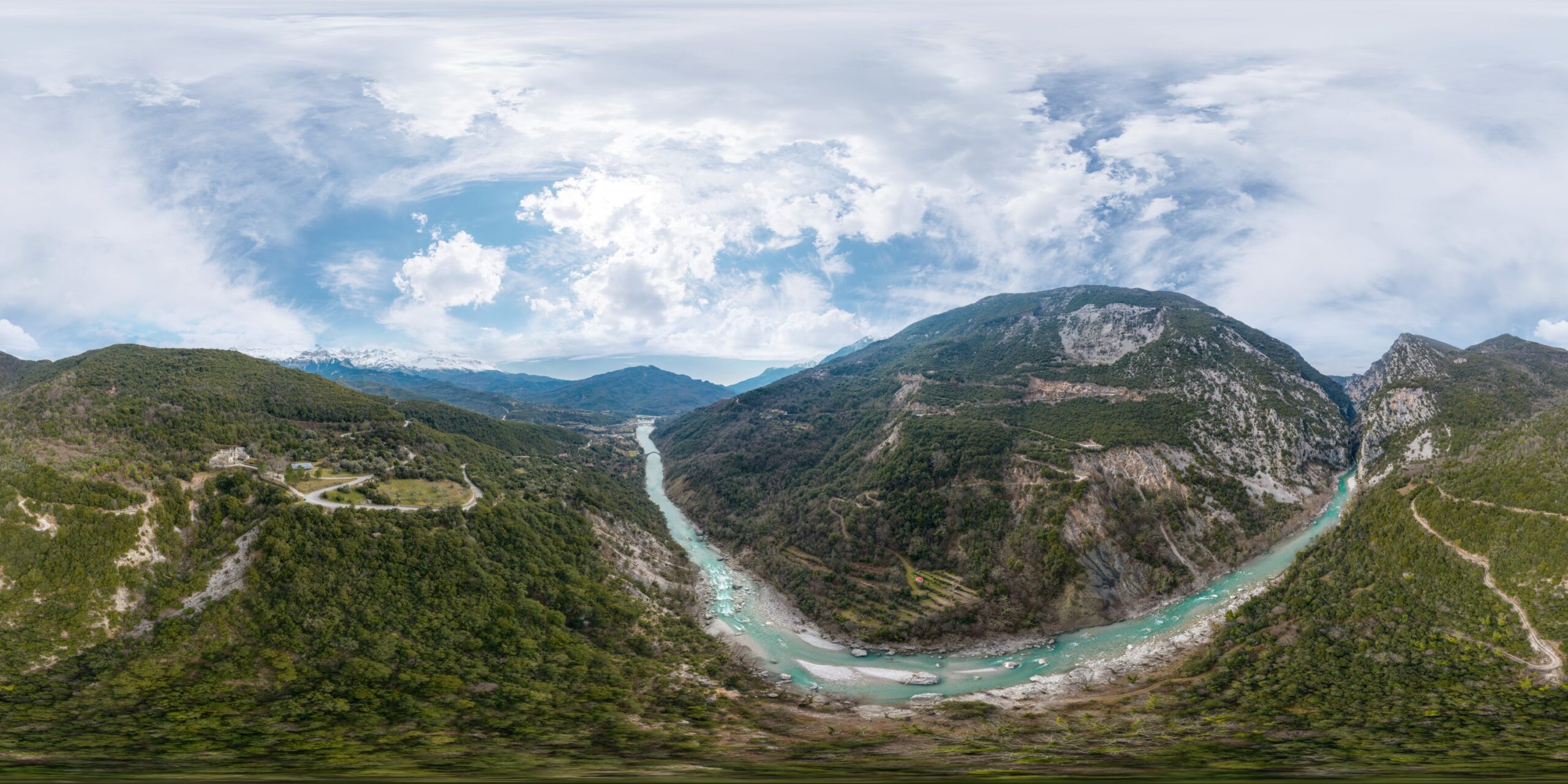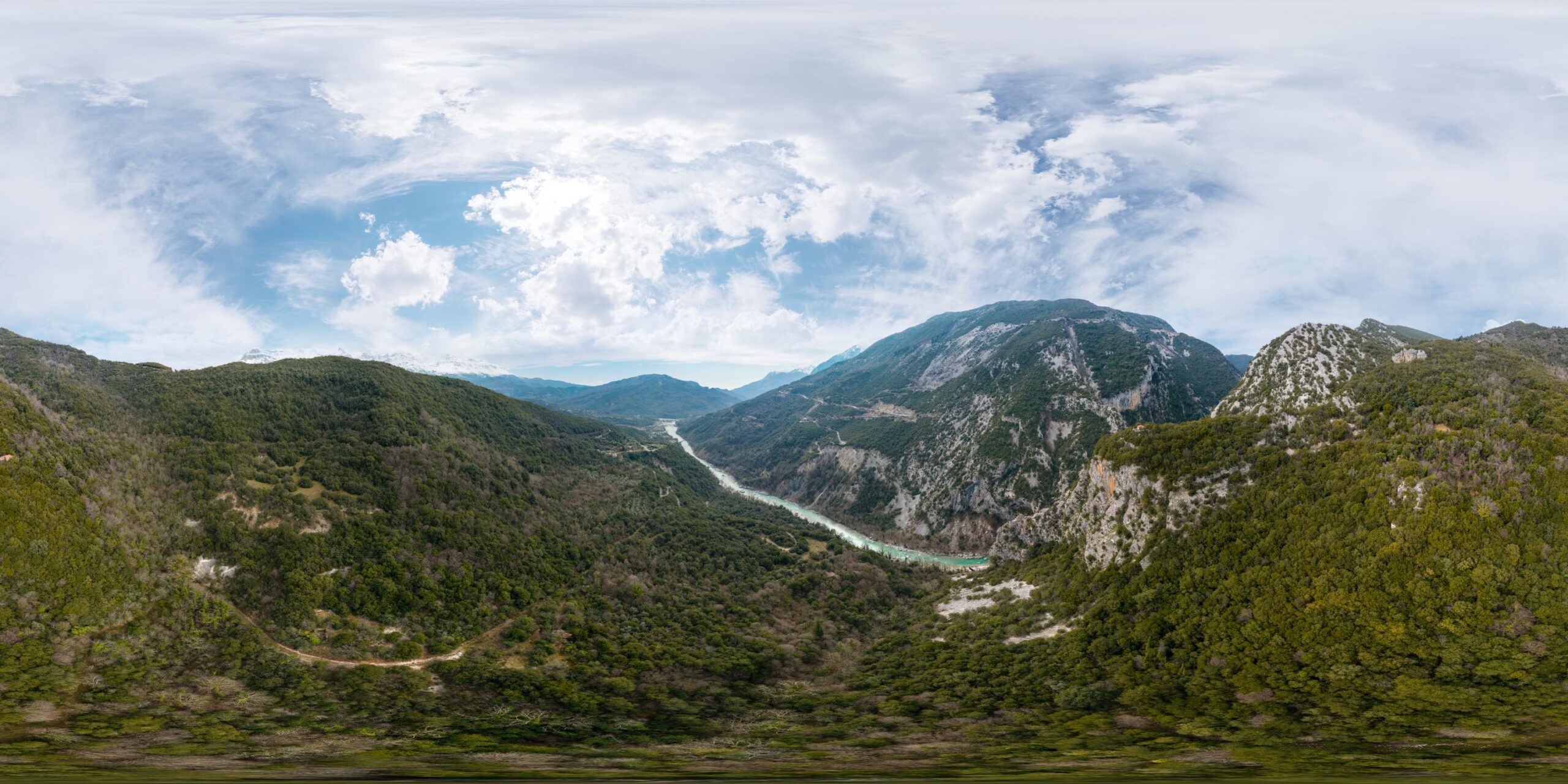The Monastery of the Virgin at Mouchousti or Plaka Monastery is located between the Plaka Bridge and the village of Raftanaioi. According to the existing inscription, the monastery was renovated in 1665. The narthex (vestibule) murals were made in 1694 and include scenes of martyrdom, of parables of Jesus, etc. The monastery has a single-apse […]
The Monastery of the Virgin at Mouchousti or Plaka Monastery is located between the Plaka Bridge and the village of Raftanaioi. According to the existing inscription, the monastery was renovated in 1665. The narthex (vestibule) murals were made in 1694 and include scenes of martyrdom, of parables of Jesus, etc. The monastery has a single-apse church with a cruciform roof, a domed basilica with a cupola and circular formations on its long sides. There is also an impressive wood carved, gold-leaf iconostasis adorning the church. The Katholikon (monastery church) has survived almost intact, as well as the main part of the church and part of the courtyard wall. The monastery was operating and active till the beginning of the 20th century. In past times, a wealth of social life events used to be held in its surrounding open-air area.
There used to be a huge livestock market and a festival called ‘mouhousti’. This celebration was held on 8 September, and it used to be called ‘Chtoimero’, i.e., eight-day event. In those days, up to 1912, Plaka, the Bridge and its Monastery, was a central hub for the broader area and this is why the festivities lasted for eight days. Many merchants participated selling copper and bronze items, ‘tsarouchia’ shoes, wool of various qualities, ‘foustanella’ kilts, woollen hats, textiles for making clothes and other wares.
Around the monastery there were numerous fields, from Arta and Kalentzi, on the opposite slope of Xirovouni, as well as the mountain fields of Matsouki. All these areas were used as grazing land for large and smaller animals. The monastery also had numerous olive trees around, a large vineyard and hundreds of beehives to meet the needs of its inhabitants and of the people living around it.
If you find yourself at the Monastery on 8 September, you can dance on the large threshing floor site and hear local visitors telling stories about miracles and traditions. The monastery is not visitable on any other day of the year. Geographically, the monastery belongs to both Ioannina and Arta. Its ecclesiastic district, however, is Arta. For further information and visits to the site, please contact the Holy Metropolis of Arta on +30-26810-27533 or the local priest.


